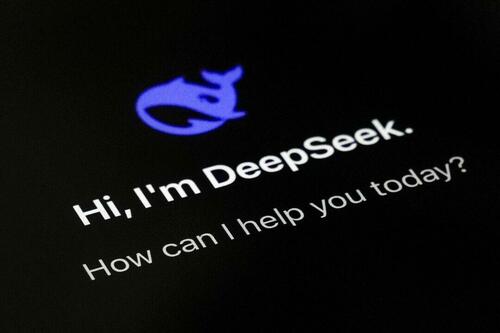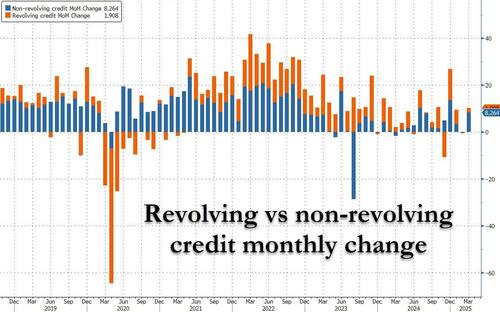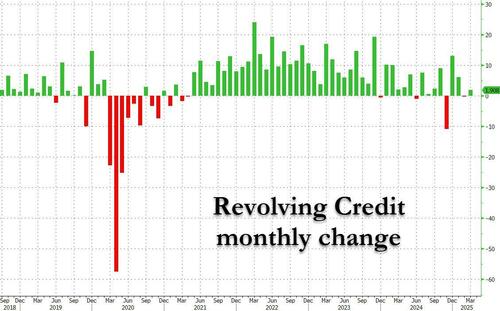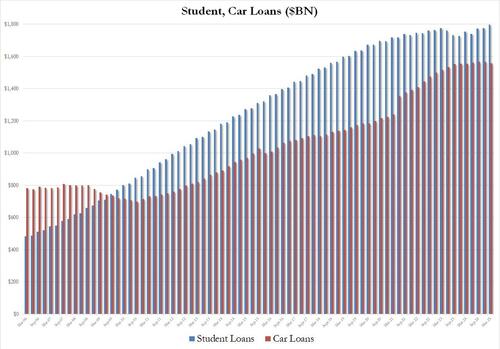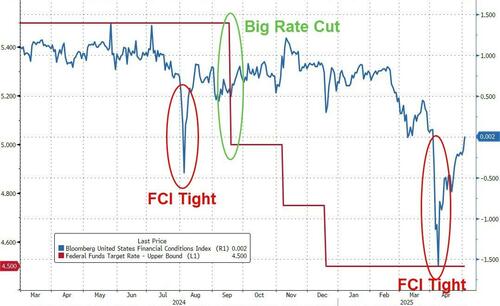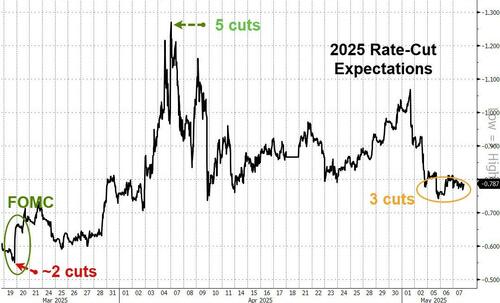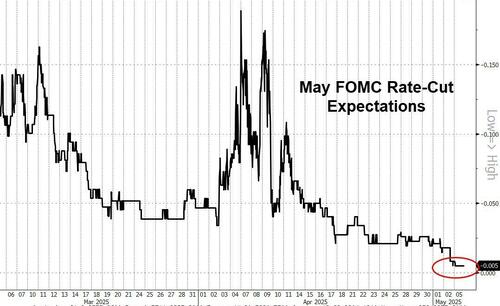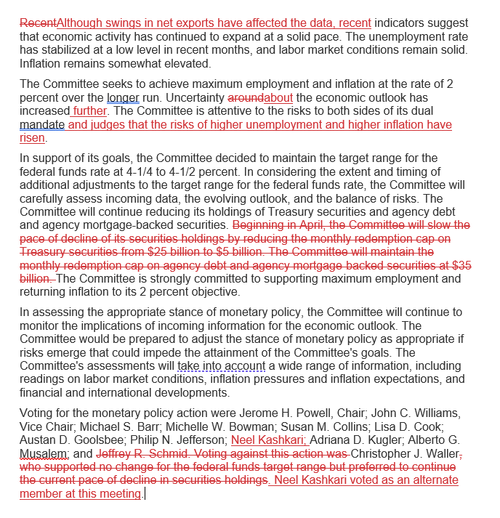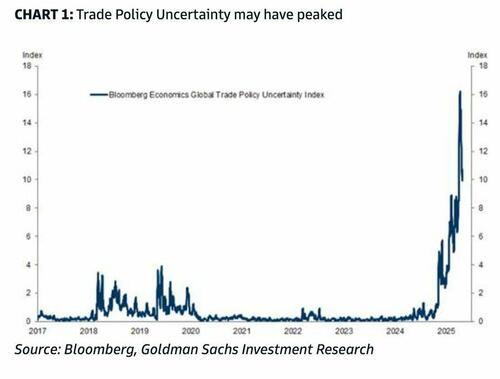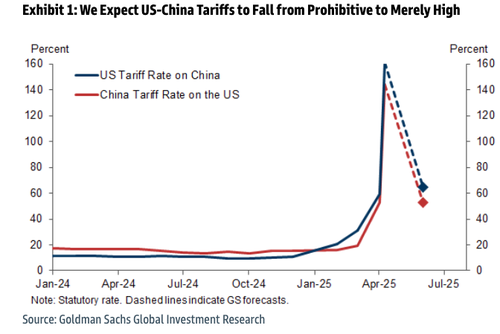In the name of tolerance, tolerance is being abolished; this is a real threat we face.
Distinction Matter - Subscribed Feeds
-
Site: Zero HedgeHow An India-Pakistan War Could Derail Central Asia's FutureTyler Durden Wed, 05/07/2025 - 23:25
Authored by James Durso via OilPrice.com,
-
A war between India and Pakistan would significantly destabilize Central Asia, disrupting trade routes, delaying infrastructure projects, and increasing regional militancy.
-
China, Russia, and the U.S. may intensify involvement in Central Asia, leveraging the conflict to protect or expand their influence.
-
Potential nuclear fallout, refugee flows, and the breakdown of regional cooperation could severely impact Central Asia’s economic development, security, and food systems.
If India and Pakistan spiral into war, there will be consequences for Central Asia.
A war between Pakistan and India would likely have significant ripple effects on Central Asia, given the region's proximity to Afghanistan and flourishing economic ties across the region. The conflict could disrupt trade and energy routes, increase militancy, and draw in major powers like China, Russia, and the U.S., potentially straining Central Asian stability.
Intervention by external powers: The Central Asian republics (Kazakhstan, Uzbekistan, Turkmenistan, the Kyrgyz Republic, and Tajikistan) are already arenas for competition among outside powers. A Pakistan-India conflict could draw these powers into the region more aggressively to secure their interests, though Russia is busy in Ukraine, Turkey is busy in Syria, and U.S. forces are fighting in the Middle East, and Washington is ready to confront China.
China is an ally of Pakistan and sponsor of the $65 billion China-Pakistan Economic Corridor (CPEC). China might deepen its presence in Central Asia to secure trade routes and counterbalance India’s regional influence. This could accelerate Chinese investments in infrastructure and energy projects that will increase trade with the region that totaled $89 billion in 2023, up 27% from 2022, $60 billion of which was Chinese exports.
And China may make further inroads into the Central Asia arms market given Moscow’s need to dedicate all its resources to the Russia-NATO war in Ukraine. This will allow China to broaden its engagement beyond infrastructure projects into the security realm that, up to now, has been limited to anti-terrorism training and intelligence sharing in Tajikistan.
Russia is an ally of India, a buyer of Russian arms, having purchased $60 billion of Russian arms, 65 percent of its total weapons imports, over the past twenty years With its historical ties to Central Asia and shared membership in the Collective Security Treaty Organization (CSTO), Russia might leverage a conflict to reinforce the region’s border security, and increase intelligence sharing and security forces training.
And just in time, Russia has declared it will help the Taliban government fight the Afghan branch of the Islamic State, the Islamic State – Khorasan Province (IS-K).
The United States could focus on Central Asia to counter China and Russia, potentially increasing military or economic aid to Uzbekistan or Kazakhstan, the major economies in the region. Unlike the leaders of Russia or China, no American president has ever visited Central Asia but President Donald Trump could signal increased U.S. attention by visiting the region.
Afghanistan as a flashpoint. Afghanistan, bordering both Pakistan and Central Asia, would likely become a hotspot. The Afghan Taliban’s support for the Pakistani Taliban, the Tehreek-e-Taliban-e-Pakistan (TTP) could further destabilize Pakistan, presenting Islamabad with the prospect of a two-front war, though recent visits by Pakistan’s diplomats, and military and security officials seeking a “diplomat reboot” may be just in time to stanch action by the TTP.
Instability would come to Central Asia via Afghanistan in the form of refugees and energized militants, and economic stagnation in the delay of development projects like the Trans-Afghan railway, the Turkmenistan–Afghanistan–Pakistan–India (TAPI) natural gas pipeline, and the CASA-1000 renewable energy infrastructure construction project.
General disorder may spill insecurity into Tajikistan and Uzbekistan, where cross-border militancy (e.g., the Islamic Movement of Uzbekistan (IMU), which has pledged allegiance to al-Qaeda, and IS-K could surge.
And the instability will cause a slowdown in foreign direct investment that has steadily climbed as has foreign trade in goods and accession to bilateral investment treaties. The region’s economy suffered “lost decades” between the start of the Afghan civil war in 1992 and the end of the NATO occupation of Afghanistan in 2021 and has been making steady progress in connecting to the wider world economy; Turkmenistan and Uzbekistan are completing the World Trade Organization (WTO) accession process, and Kazakhstan and Tajikistan are WTO members.
And just in time for a war, the World Bank is predicting economic slowdown for Central Asia: Kyrgyzstan and Tajikistan will suffer pronounced declines, Kazakhstan’s decline will be less pronounced, and Uzbekistan’s growth rate will remain steady at 5.9%.
The U.S. may try to leverage disorder on Afghanistan’s border with Pakistan to pressure the Kabul government, but that risks empowering Al-Qaeda, IS-K, the hardline Taliban faction in Kandahar, or some combination of the three. Disorder in Pakistan’s Balochistan province, the poorest place in Pakistan, may energize the local separatists and draw in bordering Iran which faces a Baloch insurgence on its side of the border.
India’s Central Asian Ambitions. India’s efforts to access Central Asian and Afghan resources, via Iran’s Chabahar port, could be disrupted, forcing India to seek alternative routes or deepen ties with Russia and Iran, affecting regional alignments, and angering the U.S. which is trying to isolate Moscow and Tehran.
India imports uranium for its nuclear power program from Kazakhstan and Uzbekistan and an uninterrupted supply by the republics will be a sign to India they value their relationship with Delhi.
Trade Route Disruptions: Central Asia relies on connectivity projects like CPEC and the International North-South Transport Corridor (INSTC). A war could disrupt CPEC which links China’s Xinjiang province to Pakistan’s Gwadar port and passes through contested areas like Kashmir. India’s trade routes to Central Asia via Iran and Afghanistan could be jeopardized if conflict escalates or Afghanistan becomes unstable, though if Indian merchantmen are unmolested by Pakistan the impact may be minimized and they will be able to safely dock at Iranian ports.
Tightened border controls will hurt regional trade that was boosted by eased border controls that teased the possibility of a unified regional market, following the resolution of many territorial disputes, a process that began in earnest after the 2016 election of Uzbekistan’s president, Shavkat Mirziyoyev.
The Central Asia republics trade with India and Pakistan and will be reluctant to be drawn into one side’s economic warfare on the other. Kazakhstan, Uzbekistan, and Turkmenistan, the three largest economies in the region, all import packaged medicaments and vaccines from India and mostly food products from Pakistan, and may find it easier to replace the lower-valued agriculture products than disrupting their medical supply chain.
Pakistan and Kazakhstan recently inked a transit trade agreement that would see goods shipped from Central Asia through the Pakistani ports of Karachi, Bin Qasim, and Gwadar, and the start of direct flights between the countries. An India-Pakistan war will bring in the insurance companies who may cancel coverage to aircraft, trucks, and their cargoes, delaying the benefits of the deal.
Spillover of Militancy: A Pakistan-India war, especially if centered on Kashmir, could embolden extremist groups like Jaish-e-Mohammed or Lashkar-e-Taiba, which have historical ties to Afghan and Pakistani militants.
This could inspire increased terrorist activity in Tajikistan and Uzbekistan, where groups like the IMU and IS-K could exploit regional conflict for recruitment and radicalization.
Nuclear Risks: Both nations possess nuclear arsenals, less than 200 weapons each. Even a limited nuclear exchange could cause dire environmental and climatic effects, disrupting Central Asian agriculture and food security, and pretty much eliminating agriculture exports as customers fret about “contamination,” despite the prevailing westerly winds. In Uzbekistan, agriculture contributes about 25% to the Gross Domestic Product and employs about a quarter of the workforce, so the economic (and political) impact would be profound.
Conflict in Pakistan or Afghanistan could drive refugees into Central Asia, particularly Tajikistan, straining resources and sparking ethnic tensions, and destabilizing resource-strapped governments.
India and Pakistan are members of the Shanghai Cooperation Organization (SCO), as are several Central Asian states, and China and Russia. A war could paralyze SCO initiatives, hindering regional security and economic cooperation. Tensions might also exacerbate India-China rivalries within the SCO, affecting Central Asia’s balancing act.
Specific Impacts on Central Asian States
Tajikistan shares a porous border with Afghanistan, making it vulnerable to militancy and refugee inflows. India’s military training programs with Tajikistan could be disrupted, and its newly-refurbished (by India) Ayni Airbase base may worry Pakistan.) As a regional leader, Uzbekistan might seek to strengthen ties with Russia and China to counter instability, however, its trade with South Asia could suffer. Neutral but energy-dependent, Turkmenistan could benefit from Chinese energy demand. As the major Central Asia economy, Kazakhstan might leverage its SCO and Eurasian Economic Union ties to mitigate disruptions but could face energy market volatility. Kyrgyzstan is economically fragile and be hit hard by trade disruptions increasing reliance on China or Russia.
Long-Term Implications
Regional Polarization: Central Asia could become more divided, with some states aligning with China (e.g., Turkmenistan) and others with Russia or the West (e.g., Kazakhstan, Uzbekistan), hindering regional unity, which may be in the interests of Washington, Beijing, Brussels, or Moscow.
Securitization: Fear of spillover could lead Central Asian states to increase security spending, diverting resources from economic development. More than half of Central Asia’s population is under 30 years of age and they have high expectations that governments are trying to satisfy by increasing educational and economic opportunity, and diversifying the economies away from agriculture and natural resource extraction, and towards technology, services, and tourism. And more security may come at the expense of civil rights.
Environmental Fallout: A nuclear conflict, even limited, could cause global climate disruptions, devastating Central Asia’s agriculture-dependent economies.
Conclusion
India has been active in Central Asia with its Connect Central Asia Policy, which aims to enhance trade, connectivity, and diplomatic engagement, and hinges on India’s development of Chabahar port in Iran, though the Trump administration rescinded the sanctions waiver on Chabahar. Washington’s fixation on Iran, specifically ruining its economy to press it for a favorable nuclear deal, may see India and Central Asia as collateral damage.
The republics import higher value goods from India (Packaged Medicaments) than they do from Pakistan (food products), and sell uranium – a strategic good – to India. India has a larger market than Pakistan and is a provider of technology products that Pakistan cannot match, and the republics’ future is with India, though they have no reason to antagonize Islamabad.
A Pakistan-India war would destabilize Central Asia by disrupting trade, fueling militancy, and intensifying great power rivalries. The region’s proximity to Afghanistan and reliance on connectivity projects make it particularly vulnerable. Central Asian states would face economic strain, security threats, and pressure to align with external powers, potentially fracturing regional cooperation. The nuclear risk underscores the catastrophic potential, with global climatic effects threatening Central Asia’s food security and economic stability. To mitigate these risks, Central Asian states might pursue neutrality, strengthen SCO ties, or seek mediation roles, but their limited clout may constrain effective responses.
-
-
Site: Zero HedgeWorld's Largest Jewelry Brand Says Reshoring US Production "Simply Won't Work"Tyler Durden Wed, 05/07/2025 - 23:00
Pandora Jewelry CEO Alexander Lacik spoke with Bloomberg TV's Anna Edwards on Wednesday about the potential for re-shoring production from Asia to the U.S. in response to President Trump's trade war. But the head of the world's largest jewelry company offered a blunt assessment: Pandora has no plans to overhaul its supply chain.
Edwards asked Lacik: "So, a third of Pandora's business comes from the U.S., which means you're quite exposed to tariffs since you produce 95% of your jewelry in Thailand. You have plans to open a site in Vietnam, but there's a 46% tariff on products coming from Vietnam into the U.S. So, Alexander, does this have you looking at other production locations?"
Lacik responded, "If I wanted to build another plant somewhere, it would take roughly three years to get something up and running. You would actually need to go to places where there is a tradition of crafting. I have almost 15,000 craftspeople working for Pandora in Thailand at the moment. Those craftspeople have many years of tradition in doing crafted jewelry."
Here's one of Pandora's Thailand factories...
"So it's not so easy, just - it's not like moving a machine from one place to another. So, first of all, finding the skilled people who can do the jewelry for us would be the first protocol," Lacik said,
He was very blunt: "So if you look at labor costs, if I were to consider going to the US, in terms of economics, that equation wouldn't work for us."
The takeaway from the world's largest jewelry company—which designs, manufactures, and markets hand-finished pieces from Southeast Asia—is that it has no plans to abandon its ultra-low-cost manufacturing hubs. That means Pandora will either absorb the tariffs or pass the added costs on to consumers.
"It's not like moving a machine from one place to another"
— Bloomberg (@business) May 7, 2025
Pandora CEO Alexander Lacik tells @annaedwardsnews the jewelry company is not looking to build production facilities in the US to mitigate its exposure to Trump's tariffs https://t.co/avWsTlJs4V pic.twitter.com/K1PtRDqsdAFor what it's worth, one could argue that Americans can live without Pandora jewelry. Instead, consider buying gold and silver coins or bars—real stores of value.
-
Site: Zero HedgeFBI Mishandled Investigating Congressional Baseball Shooting, House Committee FindsTyler Durden Wed, 05/07/2025 - 22:35
Authored by Jackson Richman via The Epoch Times,
A House Intelligence Committee report released on May 6 says that the FBI mishandled its investigation of the 2017 shooting at a GOP practice one day before the annual Congressional Baseball Game—including not calling the incident domestic terrorism and not interviewing key figures.
The committee’s chairman, Rick Crawford (R-Ark.), accused the FBI of holding up the report.
“There’s no reasonable or acceptable explanation for why the FBI stonewalled the committee for so long,” he said during a press conference.
“In fact, it’s taken so long to get this case file, many of those members at the field on that fateful day are no longer in Congress.”
The report found that the FBI did not thoroughly interview victims and eyewitnesses to the shooting, where House Majority Leader Steve Scalise (R-La.) and four others were shot.
Scalise was shot in the hip and seriously wounded, requiring several surgeries and a lengthy recovery.
Former Rep. Mo Brooks (R-Ala.) was not interviewed despite being at the scene during the shooting.
The shooter, James Hodgkinson, was shot and killed by Capitol Police, who were already on the scene due to Scalise’s presence as he was a member of House GOP leadership and therefore afforded a security detail.
The report also found that the bureau did not come up with a timeline of events surrounding the shooting.
The report attempted to dispute the FBI’s claim that the shooting was not connected to domestic terrorism.
In a press release following the shooting, the FBI said it “does not believe there is a nexus to terrorism.”
The Intelligence Committee report criticized the press release, saying it failed to include information that would have contradicted what the report called the FBI’s “suicide by cop” narrative.
“To commit suicide by cop, the perpetrator needs to demonstrate hostile intent in the presence of police. In this case, there were no observable police officers present,” the report said, noting that the officers were dressed in plain clothes.
The report said that the FBI’s “conclusions failed to follow the facts, as it reached an unsupported conclusion without completing even the most basic of investigative activities.”
The report said that while the FBI cited that Hodgkinson’s brother believed that the aim of the shooting was for Hodgkinson to die by suicide by cop, this was merely the brother’s opinion and not based on any communications.
Scalise was made aware of the report by the committee, according to Crawford, who declined to elaborate as he did not want to speak on Scalise’s behalf.
In a statement to The Epoch Times, the FBI said it “is committed to working quickly and transparently with Capitol Hill to ensure the American people receive the full truth they deserve.”
“We have diligently delivered all requested documents and will continue to cooperate fully with Congress to uphold transparency and accountability,” the bureau said.
-
Site: 4Christum
Pedophile Theodore McCarrick with one of his sexual abuse victims, minor James Grein
When the world’s cardinals met in Rome last Monday for the first of their crucial pre-conclave discussions, they raised ‘the issue of clerical abuse’, according to a Vatican spokesman.The cardinals are forbidden to reveal anything that was said.
But behind closed doors, the preparations for the conclave – which starts on Wednesday – are already mired in scandal.
Aside from doubts about the true age of Philippe Ouedraogo, a cardinal from Burkina Faso whom some claim is 80, meaning he’s too old to vote, and concerns about the presence of the Peruvian cardinal Juan Luis Cipriani, who faces sexual abuse allegations (which he denies), several cardinals have torn into the legacy of the late Pope Francis.
‘We have listened to many complaints against Francis’s papacy in these days’, one unnamed cardinal told America Magazine, a Jesuit publication.
In any case, we can be certain that Monday’s debate was haunted by a series of jaw-dropping scandals whose details are unknown to the vast majority of the 400,000 Catholics who attended Pope Francis’s funeral a week ago.
If they had known, the crowds would have been much smaller.
For the common denominator of these scandals – whose victims included 20 Slovenian nuns who claim to have been raped, Argentinian seminarians grotesquely assaulted by their bishop and a Belgian teenager subjected to incestuous assault by his uncle, a bishop – is that Francis went to bizarre lengths either to conceal or excuse these crimes.
The ‘people’s Pope’ was elected in 2013 on a promise to hold the Church accountable for clerical sex abuse.
And it’s true that he did establish new rules designed to punish bishops found guilty.
But the first Argentinian pontiff did not practise what he preached.
Continue reading at the Daily Mail
Sex Abuse Researcher Richard Sipe has died. The researcher of the Webpage BishopAccountability that points out Bergoglio´s cover-up of pedophiles as cardinal and president of the episcopal conference in Argentina
Bergoglio Accused of Sex Abuse Cover-Up in Argentina in 2002
Bergoglio approved the Argentine Leonardo Sandri who covered up pedophile Marciel Maciel as Vice Dean of the College of Cardinals
Francis Knew His Protégé Took Nude Selfies, Abused Seminarians; But Promoted Him to Top Vatican Post
Victims of homosexual predator Zanchetta say Bergoglio spits in their faces.Homosex Victim: Francis knew that Zancheta was sexually abusing us.
Dr. Janet Smith – Is Sexual Abuse Cover-Up Now a Prerequisite for Becoming Archbishop of Washington DC? -
Site: Zero HedgeCalifornia Gas Prices Could Rise 75% By End Of 2026: USC AnalysisTyler Durden Wed, 05/07/2025 - 21:45
Authored by Brad Jones via The Epoch Times,
California gas prices could skyrocket by as much as 75 percent by the end of 2026 with the expected shutdown of oil refineries in the state, according to an analysis released May 5 by a researcher at the University of Southern California (USC).
Regular gasoline prices could rise from an average of $4.82 in April 2025 to as high as $8.44 a gallon by the end of next year, said the report, authored by Professor Michael Mische at the Marshall School of Business.
Two Phillips 66 refineries in Los Angeles—about 8 percent of the state’s oil refining capacity—are slated to close by the end of this year. Valero Energy Corp. also announced last month it will shut down or restructure its Benicia refinery in the San Francisco Bay area—which accounts for about 9 percent of refining capacity—by April 2026, increasing concerns over gas prices and supply.
The USC analysis states that based on current demand, consumption, state regulations, and other factors, the refinery closures could result in a potential 21 percent drop in refining capacity from 2023 to April 2026.
This could create a gasoline deficit potentially ranging from 6.6 million to 13.1 million gallons a day, said Mische.
“Reductions in fuel supplies of this magnitude will resonate throughout multiple supply chains affecting production, costs, and prices across many industries such as air travel, food delivery, agricultural production, manufacturing, electrical power generation, distribution, groceries, and healthcare,” he wrote.
Industry experts have also warned that gas prices will spike dramatically when the refineries close.
Phillips 66 said it was shutting down its LA refinery because of the uncertainty surrounding its long-term sustainability, and because of “market dynamics.”
The state of California is currently suing major oil companies over alleged deception regarding the risks of climate change and fossil fuel combustion.
Governor Urges Energy Commission to Take Action
In an April 21 letter, Gov. Gavin Newsom directed California Energy Commission (CEC) vice chair Siva Gunda to “redouble” the state’s efforts to work closely with oil companies to ensure a “safe, affordable, and reliable supply of transportation fuels, and that that refiners continue to see the value in serving the California market, even as demand for fossil fuels continues its gradual decline over the coming decades.”
Newsom directed Gunda “to reinforce” the state’s “openness to a collaborative relationship and our firm belief that Californians can be protected from price spikes and refiners can profitably operate in California—a market where demand for gasoline will still exist for years to come.”
The governor also referred to the CEC’s Transportation Fuels Assessment report, which lists a state takeover of oil refineries in California as one of several options, and directed Gunda to recommend “any changes in the state’s approach that are needed” by July 1.
Republican state Sen. Brian Jones from San Diego, the Senate minority leader, issued a May 6 statement citing the USC study and calling the refinery closures “a looming energy and economic crisis.”
“If the Governor doesn’t act now, Californians will be blindsided by sticker shock at the pump and skyrocketing prices on everyday goods,” Jones said.
In a May 6 letter to Newsom, Jones called for urgent measures to prevent further refinery closures and support long-term energy stability, such as investment tax credits or other relief from taxes and regulations.
Meanwhile, Republican state Sen. Shannon Grove from Bakersfield urged the governor to increase new drilling permits to support in-state oil production instead of relying on “expensive foreign imports, often from hostile nations,” she told The Epoch Times.
New permits have plummeted 97 percent over the last five years, according to data from the California Department of Conservation. New drilling permits in the state dropped from 2,676 in 2019 to 86 in 2024.
“This is catastrophic for every Californian at the gas pump,” Grove said in an April 16 social media post.
“Refineries are shutting down or barely hanging on because they can’t get the oil they need to produce the gas used every day by California families.”
‘Controlling the Damage’
Mike Umbro, founder and CEO of Californians for Energy and Science—a nonprofit advocate for energy economics and environment—and a developer of an oil field project west of Bakersfield, told The Epoch Times that Newsom’s letter appears to be conducting damage control with oil companies.
“He is trying to task Siva Gunda with controlling the damage,” Umbro said.
Umbro urged the governor to take a more direct and deliberate approach by signing an executive order declaring an energy crisis, issuing permits to drill, and allowing refineries to produce gasoline.
He applauded the USC study, saying it and other independent studies are what’s needed to fully evaluate the oil-and-gas supply and ensure there is no shortage of affordable gas at the pumps for consumers.
Daniel Villaseñor, a spokesman for the governor’s office, told The Epoch Times in response to questions that Newsom’s letter to Gunda “speaks for itself.”
Sandy Louey, a CEC spokeswoman, told The Epoch Times in an email that the agency is “committed to working with stakeholders to explore options to ensure an affordable, reliable, and safe transportation fuel supply.”
Louey said the concept of a state-owned refinery is “just one in a list of many potential options for the state to consider” that the CEC proposed as possible solutions to mitigate gas price spikes in a report released last August.
In the report, the CEC identified that a state-owned refinery may provide relief to consumers but recognized many challenges to overcome, including high costs, the expertise necessary to manage refinery operations, and how the refinery would fit into the state’s transition away from petroleum fuels, she said in the email.
The California Air Resources Board is also required to develop and submit a Transportation Fuels Transition Plan to be released by the end of the year, Louey said.
According to a statement by Valero, a fire broke out at its Benicia refinery on May 5 but was extinguished within hours.
No injuries were reported, and the cause of the fire is under investigation, said the oil company. Valero did not say whether the fire would significantly disrupt production at the refinery.
-
Site: Public Discourse
The New York Times recently ran a three-part series “On the Embryo Question.” Part II was titled, “Should Human Life be Optimized?” The online version features photos and clips of babies and toddlers who were conceived on the basis of genetic selection. In one, a playful girl appears to be crawling through the screen toward the reader. An arrow points to her with the caption, “Her mother screened for gender and health during I.V.F.”
Far from optimizing human life, these practices actually render it more and more precarious for all of us.
“Anything But Sorry”
In 2017, the Canadian Down Syndrome Society released a series of short films as part of its “Anything But Sorry” campaign. In the most-highly viewed video, young adults with Down Syndrome propose a range of humorous congratulatory messages interspersed with mild profanity in order to make the case that the only truly “bad word” with which to welcome a baby into the world is “sorry.” And, in another video in this series, several parents of children with Down Syndrome recall the times they were told “sorry” by well-meaning doctors and loved ones. The parents discuss the impact this had on them and their families.
We can ask ourselves: if those with Down Syndrome and their families insist that every child deserves a warm welcome, then why have so many been met with expressions of regret?
How Will This Be?
For most of us, our first experience of responsibility was of being our parents’ responsibility. We tend to think that responsibility begins when a person is rational and can be held accountable for his actions, when an act is freely chosen and concerns some morally relevant matter. But of course, there was for each of us a much earlier experience that involved being the object of our parents’ responsibility to take care of us. We can learn a lot about the nature of responsibility from the parent-child relationship. But first, we have to ask: why are parents responsible after all?
The bioethicist Hans Jonas explained, “In its most original and massive sense, responsibility follows from being the cause of existence.” Moral responsibility derives from someone’s, through his or her own action, being the cause of some morally significant result. From parental responsibility, we have all other kinds of responsibility that are analogous insofar as every person is a parent of his or her actions. In fact, the very meaning of the word “parent” comes from parere which means “to bring forth, give birth to, produce.” Every action brings something new into the world; every choice is like a birth, and every action the cause of something new. This matters because birth, like every human action, brings with it something both expected and unexpected.
When a woman discovers she is pregnant, she almost always knows how it happened but she cannot know exactly how it will go. As Jonas’s friend, political theorist Hannah Arendt, writes, “It is in the nature of beginning that something new is started which cannot be expected from whatever may have happened before. This character of startling unexpectedness is inherent in all beginnings and in all origins.” Children are always surprising, and often, above all, to their parents. Each child’s uniqueness is literally and figuratively brought home to the awestruck parents. Yet the undeniable surprise that comes with each new child does not usually prevent parents from wanting to know something about what to expect which is perhaps why one of the bestselling pregnancy books of all time bears the title What to Expect When You’re Expecting. It might give little reassurance to new parents to find a book instead titled What Cannot Be Known Because It Is Totally Unexpected. But any parent will admit countless surprises along the way about how things turn out.
To act is always a risk. As Arendt explains,
The reason why we are never able to foretell with certainty the outcome and end of any action is simply that action has no end. The process of a single deed can quite literally endure throughout time until mankind itself has come to an end.
In this sense, there is no acting without consequences. The actions we choose have some influence on what the consequences may be, but they can never prevent there being any consequences altogether. This is because our actions always take place within relationships, within a broader community of persons.
In Anthony Doerr’s 2014 novel All the Light We Cannot See, he gives this moving description of a father’s humble awe at his responsibility for his teenage daughter Marie-Laure, who became blind at age six:
There is a humility of being a father to someone so powerful, as if he were only a narrow conduit for another, greater thing. That’s how it feels right now, he thinks, kneeling beside her, rinsing her hair: as though his love for his daughter will outstrip the limits of his body. The walls could fall away, even the whole city, and the brightness of that feeling would not wane.
The fact that the consequences of human actions and new life reverberate in ways we could neither plan for nor expect could be debilitating. Daniel LeBlanc could not have known that he would be constructing a model, a miniature of the entire city so that his sightless daughter could learn to navigate it amid the Nazi occupation of France. Such is the risk of life. And the risk of a love that could “outstrip the limits of his body” is what made it worth it.
Literature is helpful because it illustrates to us the truth that every character and person comes to be known through their actions, that at once constitute and reveal the kind of person they are. How we live out our responsibility is the basis for character development and meaning, in both a literary and a moral sense.
In some ways, we live in a time that acknowledges greater responsibility of parents than ever before. A combination of scientific knowledge, technological developments, and material prosperity leads us to have a sense of mastery over life’s circumstances. Today, having children is often seen as a life choice, one decision among others that can be desired, intended, and planned. So entrenched and widespread is this view that even those who do not avail themselves of any artificial interventions concerning fertility are often seen as having every outcome result from their sheer willfulness or desire. The reality, of course, is quite different. More often than not, new life has the character of the unexpected, of great surprise mixed with longings, disappointments, anxieties, and hopes.
Having a child is overwhelming enough, but what about under highly unexpected circumstances or with the onslaught of specific knowledge about potential risks and challenges? Prenatal testing has been among the factors that seem to paradoxically give parents increased knowledge about unknowns. Genetic information has given parents the impression that they can know and control for what to expect about their child when, in fact, the birth of any child will undeniably lead to surprises that cannot be expected because of the uniqueness of this new person who has never before existed.
All of this is complex because there is a sense in which the child is loved unconditionally and there is also the fact that a child can only be loved in the particular conditions in which we find ourselves— –in the reality of this unique person’s actual existence, and not in some ideal or abstraction that does not exist. The uncertainty of action is a part of the human condition we cannot eliminate. Attempting to eliminate the human condition only serves to rupture the particular conditions we have been given in which to live and to love.
“I Never Wish I Wasn’t Born.”
In an article on “The Art of Disability Parenting,” an interviewer asked six mothers around the world what it is like raising children with disabilities. In these short vignettes, the mothers say things like, “It’s impossible for outsiders to imagine the daily effort it takes to care for a child with profound disabilities” and “Ever since Patrick was born and we found out that he would have lifelong challenges due to a chromosomal condition, I go through times where I feel a sort of tension, a space between guilt and grief that explains the hurt but doesn’t put shame anywhere near an innocent child.”
Most parents do not anticipate having a child with a disability. Since parents naturally want the best for their children, it can be distressing to learn that a child is especially susceptible to suffering. This is particularly prominent in prosperous societies where we have the sense that so much is within our control.
With the rise of genetic testing and screening, many parents report feelings of guilt over passing on genetic conditions to their children. “Genetic guilt” might be the term. This guilt is heightened when a genetic risk factor is ascertained through prenatal testing. There are online support groups for every community and the discussions that happen there deserve our attention and reflection.
For example, the BRCA genetic mutations dramatically increase the likelihood of developing breast and ovarian cancer. The more we learn about the hereditary nature of this condition, the more people express feelings of guilt for handing on the genetic predisposition to their children amid the increased availability of genetic testing and screening.
Consider some of the posts in a BRCA Facebook group about contending with such genetic knowledge:
Does anyone else feel guilt? I think about my kids testing positive for BRCA1 and 2 and then my grandchildren and I literally cry my eyes out. I know I didn’t necessarily give it to them but I can’t get the thought out of my head.
I haven’t quite handled the guilt of knowing my 3 kids now have to be tested.
I know it isn’t something I can control but I feel so much guilt.
The only thing I got from my genetic counselor was guilt for choosing to have kids.
My fertility doctor really pushed me to go the IVF route to avoid passing the BRCA mutation to my baby.
I truly feel like crap as a mom for giving her the gene[tic mutation].
I definitely don’t want to pass on this gene[tic mutation] to my children but I also don’t know if I want to do IVF. Am I [wrong to] want to have kids the natural way?
What are we to make of this? And how can we best accompany those who experience these feelings? Many commenters beneath these posts affirm the feelings while simultaneously trying to reassure these parents they are not in fact guilty. But can we explain why they are not?
I am particularly struck by the variations on the theme of what one woman who is a BRCA mutation carrier expressed in her comment beneath a post on genetic guilt. She wrote, “I never wish I wasn’t born.” This testimony is instructive because we know it is a consistent trend that people rate other people’s quality of life lower than the people do themselves. Many estimate, “I could never live with this or that condition.”
Granted, disability and genetic risk, like the risk posed by the BRCA gene, are not entirely alike. But feelings of guilt and regret can exist in both circumstances.
Catherine Frazee, a leading disability scholar in Canada, calls herself a “fugitive from the laws of genetic science” because she was born just after the invention of amniocentesis. In her fascinating book, Dispatches from Disabled Country, she insists, “Bad things happen to disabled people. Disability isn’t one of them.” She continues:
In every barrier that we encounter, disabled people are reminded that we are unexpected. In every stare that follows us, in every moment of awkward silence that surrounds us, disabled people are reminded that we are the other. In every gush of admiration, disabled people are reminded that we are what nondisabled people feel lucky not to be.
Returning to the themes of responsibility and guilt, Hannah Arendt makes a crucial and convincing distinction between the two. She says, “There is such a thing as responsibility for things one has not done; one can be held liable for them. But there is no such thing as being guilty or feeling guilty for things that happened without oneself actively participating in them.” By the procreative act, parents are responsible for being the cause of their child’s existence whenever fertilization takes place. Given the nature and purpose of the sexual act, it always has a morally significant dimension. Yet, despite the fact that children receive their genetic makeup from their parents and equally owing to the nature of the reproductive act, parents cannot be said to actively participate in any morally relevant sense in their child’s genetics. The introduction of IVF and preimplantation genetic diagnosis (PGD) has, understandably, obfuscated this distinction. By speculatively selecting certain embryos over others, parents and doctors now seem to be “actively participating” in determining the genetic future of any eventual children. And such selections have implications beyond the families who choose to attempt them. As Leon Kass put it, “A child with Down’s syndrome or hemophilia or muscular dystrophy born at a time when most of his (potential) fellow sufferers were destroyed prenatally is liable to be looked upon by the community as one unfit to be alive, as a second (or even lower) class human type.” This also contributes to parents’ sometimes “feeling guilty” for their child’s genetic condition, despite these parents’ not having caused it in any morally relevant or active sense.
There is a difference between seeking to improve a child’s health and wanting to accept only healthy children. There is a difference between wanting the best for children and wanting the best children. It is crucial for us to be able to distinguish justifiable interventions to improve health from immoral calculations to discard life. The fundamental difference lies in respecting the new person as a good in him or herself, not as incidental to achieving some idealized product, nor as a project of their parents’ making. Because genetics is in the realm of science, this information gives us the illusion of being able to know and control the future. But of course, it is mere happenstance that we have knowledge of certain genetic and chromosomal conditions and not of others. We also know from tragically many cases that prenatal screening can be flat out wrong, leading parents and doctors to draw life-altering conclusions based on ambiguous information. As emotionally difficult, ethically complex, and scientifically uncertain as genetic knowledge can be, it will be an increasingly prevalent factor in modern life. How do we meet these challenges and respond rightly to reality? Can genetic information be used for the good of the person, rather than only being a threat to him or her or a basis for unjust discrimination?
If Knowledge Is Power, Then What Is This Power For?
A common genetic disorder in North America is cystic fibrosis (CF). Those living with CF experience a range of symptoms and complications, mainly concerning the function of their lungs. Once again, it is worthwhile to read the discussion threads on dedicated social media pages of this community to consider the impact of genetic knowledge and genetic guilt on decision-making. Consider this mother’s post:
Looking for help. I am 12 weeks pregnant and we just found out that both my husband and I are CF carriers. I had an uncle who had CF and passed away in his 20s but we were completely surprised that my husband was a carrier. Anyway, the OBGYN said she’s referring us to a genetic OBGYN counselor to get further testing (CVS or amniocentesis) to see if the baby has CF. At that point, as she put, “we have a decision to make” if it comes up positive. This question does not come from a place of malice, but I’m looking for some insight from people with CF. You know the trials and tribulations you’ve gone through for so long. If you knew a baby had CF, would you still bring it into this world KNOWING it would have the same struggles? Once again, I apologize if I come off naive or insensitive . . . I really don’t mean to.
The post provoked no fewer than 187 responses. Like this mother, many are quite literally crowdsourcing genetic counseling and bioethical reflection on social media. Such posts, which are common, show how people grapple with complex decisions in sincere ways that also display a certain audacity to raise questions they might not ask in other settings.
So what did the commenters have to say? There are a few comments from family members and those living with CF saying that they would not want to bring someone with CF into the world. On the ten-thousand-member CF Facebook page, these comments are undeniably the outliers. By and large, the main tenor of the posts and comments is about how life is worthwhile in spite of the difficulties. Many people living with CF and family members of those with CF commented with photos so to say, “Look at me now!” Here are some of the comments:
Here’s my 8-month-old CFer! I wouldn’t change one thing. CF is just one thing about him. He still is so many other things & has a whole life ahead of him! There hasn’t been a better time for CF with all the medicines and treatments. I would never ever change a thing! Feel free to message me if you’d like.
My CFer is nine years old, never been hospitalized, plays competitive soccer on 2 different teams. Aside from her breathing treatments she’s a completely normal kid. When I was pregnant I had no idea my Cosette had CF and I’m so very glad. She’s amazing and even though our life isn’t “normal”, it’s OUR “normal” and I’ve never regretted it once. Everyone has to make their own decision but with all the medications out right now CF is becoming more and more manageable and they are living long and healthy and amazing lives.
I have a younger brother and a younger cousin who have it as well and seeing how they have benefitted from new medical advances is something I really try to get others to see. People with CF are still normal folks, even though the internet portrays CF as hopeless (which I can’t stand) btw. Of course, any time you hear your child might not be 100% healthy, it’s scary. However, it’s something that’s worth fighting for and not giving up on!
Absolutely! The CF world has changed drastically and keeps advancing. I just turned 31 on Tuesday, and I wasn’t supposed to see 17. Yes, I did have a double lung transplant at 27, but even going through some trials and battles, I still feel I’m winning!
It is notable how many comment with encouragement and hope concerning new medications, technological advances, treatments, and especially the benefits of early diagnosis and interventions for improving the person’s condition, lifestyle, and longevity. Often it is those who are affected by certain conditions who become the best advocates for contributing to scientific improvements and medical advances. This is because there is an obvious incentive for those whom these challenges concern personally to be motivated and invested in making improvements for others like themselves or their loved ones who face these conditions.
Genetic knowledge and prenatal screening should always be directed to the good of the person. And, it is never in the person’s interest not to exist. The sheer existence of any person reveals that this person is wanted, that he or she has a reason for being in the world. We know intuitively that no one deserves to be excluded from the human family. This is why some of the most successful campaigns concerning genetic testing and screening have been conducted under the auspices of ensuring genetic nondiscrimination. We can see how much we need each person and community in the world and observe how they are the concrete answers to people’s probing questions. If ever we accept a criterion under which any person or demographic should not exist, then our own lives and worth becomes insecure. How we accept and receive others amid the uncertainties and risks of life affects the extent to which we can accept ourselves.
Accepting Our Children, Accepting Ourselves
Most people do not have much difficulty accepting their strengths. Our insecurities usually stem from contending with our (often-frustrating) vulnerabilities. We are prone to idealism, comparison with others, and sensitivity to their judgments about us. Perhaps for these reasons Henri Nouwen diagnosed self-rejection as the greatest trap. Nouwen described self-rejection as whenever we say to ourselves, “If people really knew me, they wouldn’t love me.” Our limitations can make us feel deficient, inadequate, and even unlovable. But, as scholar Stephan Kampowski points out, “Love is nothing that can be manufactured or technologically enhanced.” By accepting the limitations and fragility of our lives, we discover the actual conditions in which we are specifically invited to love. Saying “no” to these conditions, or attempting to overcome them, only restricts the horizon of our capacity to love.
A person can better admit his own weaknesses and limitations if he can receive those of another. And a person can only receive life in all its risk and uncertainty with a healthy degree of self-acceptance. A particularly articulate account of this experience can be found in historian Sarah C. Williams’s reflection on the nine months she and her family had with her daughter Cerian:
When I first found out about Cerian’s deformity and made the choice to carry her to term, it felt like the destruction of my plans and hopes. It went against what I wanted. It limited me. But it was in this place of limitation that God showed me more of his love. Up until this point, the clamor of my desires and wishes had made me like a closed system centered in on myself, on my needs, flaws, and attributes. My life, even at times my religion, had revolved around achievement, reputation, and winning respect and approval from others. I had busied myself with [the] perfect home, perfect children, perfect job, all the things I wanted. I knew I had lost something deep and precious, but I didn’t know what it was. And the more I felt the lack of it, the harder I tried to find it through effort. During the nine months I carried Cerian, God came close to me again unexpectedly, wild and beautiful, good and gracious. I touched his presence as I carried Cerian and as a result I realized that underneath all my other longings lay an aching desire for God himself and for his love. Cerian shamed my strength, and in her weakness and vulnerability, she showed me a way of intimacy. The beauty and completeness of her personhood nullified the value system to which I had subscribed for so long.
[…] Limitation, finitude, suffering, weakness, disability, and frailty can be gifts. Far from robbing us of our humanity, these things are needed if we are to be human. Without them, we strip ourselves of the opportunity to confer dignity on each other regardless of our physical and mental condition and we lose sight of the essential given-ness of human life. Ultimately, personhood is not a work of self-definition and self-creation. Instead, it is a gift.
Williams does not conceal her grief and lamentation over her daughter’s diagnosis. She admits the shattering of her hopes and plans and then tells us that her daughter’s weakness shamed her strength and caused her to reconsider her values. By accepting her child, she came to a new and greater acceptance of herself than she ever imagined. Accepting our children (and accepting all the others in our lives who “shame our strength”) is the path to self-acceptance, to our sheer existence being enough to tell us that we are wanted.
Life: Precarious and Precious
There are many challenges we face in accepting new life, particularly when given a preview through genetic testing of the potential challenges and vulnerabilities a loved one may suffer. From the perspective of those living with various conditions and their families, we find an overwhelming insistence on the value of existence and appreciation of life. While parents sometimes express feelings of guilt for handing on genetic predispositions or for knowing prenatally that their child may suffer because of a chromosomal condition, parents cannot actually be said to be guilty for their children’s genetic makeup because they are not actively responsible for causing it. Parents are responsible for causing their children’s existence and then are responsible for welcoming their children amid the particular circumstances in which they are called to love them.
Keeping the person at the center of concern maintains our focus on his or her good rather than on our own fears and insecurities. And, each time we practice accepting another in the fullness of their fragility, we come to a healthier, more honest acceptance of ourselves, too.
Image by Ermolaev Alexandr and licensed via Adobe Stock.
-
Site: The Remnant Newspaper - Remnant ArticlesIn this Conclave Report from Rome, Michael J. Matt reports on the implications of black smoke on the first day of the Conclave. What does it mean? The Cardinal electors all turned in their cell phones today, severed all connections with the outside world, and took an oath to do their duty as princes of the Catholic Church.
-
Site: LifeNews
Most members of the mainstream media, now more accurately described as the “legacy media,” live in a bubble.
They only know others who think just like they do, and because of this, they think they are in the right. Anyone who disagrees with them must be an outlier or a fanatic. They are rewarded for this kind of groupthink and for the skewed representations they write, produce, or film.
The Poynter Journalism Prizes are coveted awards among journalists and are given to reporters who most often report from their uber-liberal-bubble perspective. Skewed reporting on a number of issues reaps the greatest prizes and none are higher than the Batten Medal.
According to Poynter, “The contest’s most prestigious prize, the Batten Medal…awards exceptional journalism that makes a difference to the lives of people and their communities.”
According to Poynter.com, this year’s prize was “Awarded to Kavitha Surana, Cassandra Jaramillo and Lizzie Presser of ProPublica for Life of the Mother, an investigative series that exposed the devastating consequences of restrictive abortion laws since the Supreme Court overturned Roe v. Wade in 2022. Readers were introduced to Amber Thurman and Candi Miller, two Georgia women who died after they were unable to access legal abortions and timely medical care in their state.
Click here to sign up for pro-life news alerts from LifeNews.com
“Judges said the series from the Pulitzer Prize-winning investigative newsroom revealed for the first time the stories of women whose deaths could have been prevented.”
Yes, the deaths of Amber Thurman and Candi Miller could have been prevented but the fault lies not with pro-life laws.
In Amber Thurman’s case, the fault lies with known complications of the abortion pill which can and are missed. In addition, delayed care and decisions, allegedly made by hospital staff, likely contributed to Amber’s death.
Who is to blame for the loss of life? The abortion groups and entities who send out mifepristone/misoprostol abortion pills through the mail or hand them out in person and then send a client on her way with very little to no screening. They don’t think—or care—about the consequences.
The fault lies with reporters like those at ProPublica who engage in fearmongering to score political points. These articles and reports scare women like Candi Miller, who had medical conditions that meant she should not have taken mifepristone, “the abortion pill.”
These reports scare women who may, like Candi Miller, wait too long to be seen by doctors after taking the abortion pills because they think they will get in trouble with the law.
Both lives could have been saved but ProPublica’s report spread misinformation and contributed to the scare tactics used by the abortion industry. So yes, these reporters made a “difference” in their communities but a negative one—one that reinforces the lies women being told by Big Abortion.
Lies that tell them their baby is not really a baby and taking a pill is “easy and simple.”
Lies that can put them in the hospital because the “rare” complications cited by the abortion industry are more common than the abortion industry admits. They like to pretend that one half of one percent of women have complications after taking mifepristone.
But a recent report shows that number to be 22 times higher than the reported .5 percent. This puts far more women at risk needing medical intervention after a chemical abortion.
The mainstream media and publications like ProPublica have done and continue to do serious harm to women. But don’t expect them to admit it—not when they are being awarded for it by their peers.

The post The Liberal Media Rewards Itself for Lying About Abortion appeared first on LifeNews.com.
-
Site: Saint Louis Catholic

Of course, I know that this is not true, or at least not bloody likely, but imagine if this were Archbishop Viganó being flown to accept the papal election. It would prove that God loves us and is omnipotent.
Keep praying! 
-
Site: LifeNews
In his new memoir, actor and producer Kelsey Grammer details the regret he experiences over the abortions of two of his children. Referring to the first one, he writes, “Though I have supported it in the past, the abortion of my son eats away at my soul.”
Grammer recently published Karen: A Brother Remembers, a memoir about his younger sister, who was raped and murdered, People Magazine reported. In the memoir, he writes about his experiences involving the two abortions.
In 1974, Grammer’s girlfriend became pregnant. He wrote that he was willing to take care of his son, but his girlfriend did not want to, so he did not pressure her to keep the baby.
Click here to sign up for pro-life news alerts from LifeNews.com
“I supported the idea that a woman has the right to do what she wants with her own body. I still do,” he writes. “But it’s hard for me. Still is.”
Six months before his own sister died, Grammer writes that he “volunteered to have my son’s body vacuumed out of his mother’s. I regret it. That’s all I meant to say.”
He also criticized the doctors who perform abortions, writing, “the doctor, or so-called doctors, who have executed generations of children in this manner — I have no idea how they call themselves doctors. Something about the ‘first, do no harm’ thing. But I offer no controversy.”
Grammer also wrote that doctors pressured him to abort one of the twins — a little boy and girl — that he and his current wife, Kayte Walsh, were expecting.
The boy’s amniotic sac ruptured at 13 weeks.
“Doctors advised us his continued growth without the safety of his amniotic fluid would surely kill him and probably take Faith too,” Grammer writes. “It did not repair.”
He added that he and his wife prayed about the decision and followed the doctor’s advice.
“We killed our son so Faith might live. We wept as we watched his heart stop,” Grammer recalls in the memoir. “It is the greatest pain I have ever known. Kayte’s scream was enough to make a man mourn a lifetime.”
LifeNews Note: Grace Porto writes for CatholicVote, where this column originally appeared.

The post Kelsey Grammar Slams Abortion: It Has “Executed Generations of Children” appeared first on LifeNews.com.
-
Site: Henrymakow.com
"The Venetians selected Ike Newton, a weird and obscure Cambridge don,
to replace Galileo Galilei in the role of "Great Modern Scientist".
Nowadays, the British Freemasonic "royal" "scientific"
society can no longer keep secret the fact that Newton was a raving irrationalist,
and a cultist oddball."
Makow--Our materialistic view of reality denies the existence of the soul or spirit.
Satanists used Isaac Newton to promote this fallacious view.
HISTORIAN WEBSTER TARPLEY SHOWED HOW ISAAC NEWTON WAS A FAKE-"SCIENTIST"
In the following talk from 1981, historian Webster Tarpley exposed the "great" Isaac Newton as a TOTAL FRAUD:
WHO CREATED THE NEWTON MYTH?by Patrick O'Carroll(henry makow.com)
In the early 1700s, a group of Venetians comprising Antonio Schinella Conti and Giovanni Maria Ortes created the NEWTON MYTH, combated Gottfried Wilhelm von Leibniz, and launched modern materialism or utilitarianism.
Tarpley credits the Venetian Antonio Conti (an abbot) with raising the incompetent Newton to the status of an idol or a "Great Modern Scientist".
It was really Conti who arranged Newton's "apotheosis" to the status of "scientific" "deity". But once Newton had been declared a "scientific" "genius", it became difficult to undo this titanic mistake.
The Venetians selected Ike Newton, a weird and obscure Cambridge don, to replace Galileo Galilei in the role of "Great Modern Scientist". Nowadays, the British Freemasonic "royal" "scientific" society can no longer keep secret the fact that Newton was a raving irrationalist, and a cultist oddball. So, the Newton Hoax is now being exposed.
NEWTON PLAGIARIZED THE GENUINE SCIENTISTS OF HIS TIME
Gottfried Wilhelm von Leibniz of Germany was the real inventor of MATHEMATICAL CALCULUS. But a fraudulent assertion by the British Freemasonic "royal" "scientific" society claimed that Newton invented calculus in 1671 but that he had then somehow "forgotten" to mention this "fact" in public print for the next approximately 40 years.
Newton plagiarized his "law" of gravity (also known as his "law" of universal attraction) by purloining, and then combining, the following two works of genuine scientists:
- Johannes Kepler of Germany: Ike Newton plagiarized Kepler's famous "Third Law" for his "law" of gravity;
- Christiaan Huygens of the Netherlands: Newton did likewise for Huygens' "Formula for Centrifugal Force".
Leibniz correctly mocked Newton's "Action at a Distance" concept as a case of Kabbalistic Black Magic.

FAKE-"SCIENTIST" NEWTON WAS REALLY AN ALCHEMIST, AND PROBABLY A KABBALIST
Newton was already notorious for his occult studies (https://en.wikipedia.org/wiki/Isaac_Newton%27s_occult_studies). He preferred to keep the company of young men only, and once attacked John Locke for "trying to embroil him with women".
He was certainly an alchemist and most likely a Kabbalist. Newton's peers confirmed that his laboratory at Trinity College Cambridge was fitted out for alchemy. He has often been tied to fraternal orders. And, although there are few reliable sources on this, it is highly LIKELY that Newton was both a Rosicrucian and a Freemason.
In 1696, Newton left Cambridge to work in London as "Master of the Mint". Then, he placed all his alchemy papers in a box that later became known as the "Portsmouth Papers".
In 1936, Sotheby's auctioned these papers for their then-owner Charles Cochrane-Baillie ("2nd Baron Lamington"), and Rothschild-Front-Man John Maynard Keynes bought most of them. But when Keynes analyzed the "Portsmouth Papers", he concluded that the deranged and demented Newton was NOT A SCIENTIST, but in fact an alchemist and a Kabbalist. Keynes summed up:
"Newton was not the first scientist of the age of reason [circa 1660-1820]. He was the last of the magicians, the last of the Babylonians and Sumerians, the last wonderful child to whom the Magi could do sincere homage".
The "Portsmouth Papers" contain writings of about 1.2 million words (about as long as the multi-authored works of "William Shakespeare"). The following passage is a typical sample illustrating the vein in which they were written:
"For alchemy does not trade with metals as ignorant vulgars think, which error has made them distress that noble science; but she has also material veins of whose nature God created handmaidens to conceive and bring forth its creatures ... Concerning Magnesia or the Green Lion; it is called Prometheus and the Chameleon. Also Androgyne and virgin verdant Earth in which the Sun has never cast its rays although he is its father and the Moon its mother also common mercury, dew of heaven which makes the Earth fertile, niter of the wise ... It is the Saturnine stone".
Keynes added: "Newton was a suspicious, paranoid, unstable personality; he was a Judaic scholar of Maimonides [whom many have identified as a Satanist]". That hints that Keynes was really fingering Newton as a Kabbalist.
The "Portsmouth Papers" also show that Newton was a supporter of the Arian Heresy and a crypto-Unitarian too who rejected the Holy Trinity, but he was of course obliged to keep these heresies secret from the Anglicans.
Newton spent 20 years writing these alchemical texts while he was SUPPOSED to be working on his "Principia Mathematica". Then, he had a nervous breakdown in 1692 after which he never recovered his former consistency of mind. Thereafter, Newton's friends Samuel Pepys and John Locke thought that he had become demented.
The "Portsmouth Papers" show Newton's real interest to be not physics, mathematics, or astronomy, but alchemy.
On close inspection, Newton wasted all his time on alchemy; he made no discoveries; he was a scientific failure.
WHO IS KEEPING THE NEWTON MYTH ALIVE?
The Newton Myth is backed most notably by the British Freemasonic "royal" "scientific" society, which still remains the world's Central Freemasonic Soviet for all "official" "scientific" "truth". Terrifyingly, this Central Freemasonic Soviet will ice or oust any academic who opposes its MANDATED "scientific" "truth".
NEWTON'S "LAW" OF GRAVITY DEBUNKED
Gravity depends solely on the laws of density and buoyancy. But the Newtonian "law" of gravity is based on Kabbalistic "Action at a Distance", which is a fictional idea from Kabbalistic Black Magic(k), where one object pulls another distant-object toward it without any exchange of energy or matter. But a "force" called gravity has never been proved to exist. Worse still, genuine scientists proved that a "force" called gravity is PURELY FICTIONAL.
A helium-filled balloon disproves the "law" of gravity by rising, and clinging to your kitchen ceiling for months.
An air-filled basketball disproves the "law" of gravity by rising to the surface of your swimming pool.
In 1995, Boyd Bushman of Lockheed-Martin proved that gravity contains an electromagnetic component, although fake-"scientist" Newton claimed it depended solely on the masses of two objects and the distance between them.
The "law" of gravity claims that Kabbalistic Black-Magic "Action at a Distance" occurs between any two particles. Thus, Newton's "law" of gravity also predicts nonzero horizontal and nonzero nonvertical (obliquely-acting) gravity.
ZERO horizontal gravity and ZERO nonvertical (obliquely-acting) gravity
Freemasons walking through Zermatt-Switzerland do not sense any horizontal gravity pulling them toward the Matterhorn, not even a tug on their sleeves. The same applies in downtown Manhattan NYC, where the One World Trade Center doggedly refuses to exude any horizontal gravity that folks might sense pulling them toward it.
In fact, the horizontal gravity predicted by Newton's "law" of gravity is always measured as being ZERO.
Newton's "law" of gravity also predicts nonvertical (obliquely-acting) gravity of at least 3 m/s² from the enormous hemispheres of the Earth shown here: https://ibb.co/vCX8MJ7s. But this is always measured as being ZERO.
CONCLUSION
Isaac Newton was one of the biggest scientific frauds in history, and his now-disproved and now-debunked "law" of gravity is based on a fake Kabbalistic Black-Magic concept called "Action at a Distance", which was correctly mocked by genuine scientist Leibniz. The only reason it is called a "law" is because most Freemasonic "Science" DEPENDS upon it, meaning that modern Freemasonic "Science" is truly hanging by a thread.
But there is no action at a distance; there is no attraction between particles; there is no attraction between inanimate objects; and there is also no attraction between "spinning globes". That is all pure fiction.
Those who still believe in Newton's "law" of gravity are properly classed as Kabbalistic Black-Magicians.
Overall, with its bogus "law" of gravity, Freemasonic "Science" was just trying to make Kabbalistic Black Magic seem "real". Please stop falling for it!
The top three scientific frauds of all time were Isaac Newton, Albert Einstein, and Steven Hawking.
-
Site: Real Jew News
Episode 78: Smart City Digital Prison
May 7 2025___________________________________
More Vids!
+BN Vids Archive! HERE!
___________________________________
Support The Brother Nathanael Foundation!
Br Nathanael Fnd Is Tax Exempt/EIN 27-2983459

Or Send Your Contribution To:
The Brother Nathanael Foundation, POB 547, Priest River, ID 83856
E-mail: brothernathanaelfoundation([at])yahoo[dot]com
Scroll Down For Comments
-
Site: AsiaNews.itSpeaking to AsiaNews, the activist attacks the prime minister who "wants to continue the war" to "survive politically,' aided by a weak and fragmented opposition and widespread "weariness and despair" in Israeli society. Israel's latest attacks in Gaza sow more death and destruction. Only un "unpredictable" Trump can push for an agreement but his focus is on the Houthis in Yemen. Some 55 NGOs sign an appeal against the law that would block their activities.
-
Site: Euthanasia Prevention CoalitionThis article was published by National Review online on May 6, 2025
By Wesley J Smith
Five years ago, the highest court in Germany declared that committing suicide is a fundamental right — for everybody and for any reason — and that being assisted or assisting others in the act are ancillary rights associated with that liberty. In other words, death on demand. Now the Supreme Court of Estonia appears to have followed the same course.
Here’s the context: A man who provided a suicide machine to those who wanted to kill themselves was acquitted of any culpability. He was charged, among other crimes, with providing health services without a license. But the Court ruled — quite logically and correctly — that helping someone commit suicide is not health care. From the ERR News story:
The Supreme Court noted that Tammert’s actions did not serve any of the legally required purposes of providing healthcare services. Current law does not recognize as treatment any activity that intentionally harms health. Therefore, causing death cannot be considered the provision of a healthcare service.I wish our courts understood that assisted suicide — despite its being called euphemistically “medical aid in dying” — isn’t health care. It is simply suicide, or helping someone commit suicide.
If the Estonian court had left it at that, it would be one thing. But it ruled that committing suicide is a right, as is assisting and being assisted in doing so:
The Supreme Court further emphasized that every competent individual has the right to end their life voluntarily. Criminal liability for assisting in such an act can only arise if the person is unable to carry it out themselves or lacks full understanding of the significance of their actions.The court called on the Estonian parliament to issue regulations to guide non-medical suicide facilitation. In other words, once again: death on demand.
At least these rulings candidly cut through the toxic smoke so often generated by assisted-suicide advocates who claim that the death agenda is about terminal illness or, indeed, physical illness or disability at all.
Here is the debate we should be having.- Should suicide be a right?
- If people want to be dead, should they have a right to be assisted in terminating their lives?
- Are there any limits to personal autonomy?
So, let’s stop pretending that any of this is about medicine or health care. That conceit merely corrupts the medical profession.
And let’s face the fact that, to an increasing degree, the West is no longer an anti-suicide culture. -
Site: Zero HedgeThe First Crypto Currency: The DollarTyler Durden Wed, 05/07/2025 - 17:00
Authored by Christopher Whalen via DailyReckoning.com,
President Abraham Lincoln is considered to be the moral savior of the United States for ending slavery. To pay for the war, he made enormous changes in the basic relationship between the federal government and money. These changes greatly diminished individual property rights and increased the power of Washington over the private economy.
The paper money created by Abraham Lincoln to finance the Civil War was the first crypto currency. Lincoln relied on the issuance of nonconvertible paper currency to support the military effort, in today’s terms like forcing people to accept buttons or miscellaneous crypto tokens in payment. Lincoln used interest bearing paper “money” or “greenbacks” to finance the Civil War and, more significant, passed laws mandating the acceptance of paper currency as “legal tender” for all debts.
When Treasury Secretary Salmon Chase asked Congress to pass the legislation in order to maintain government bond prices and procure supplies for the army, the law provided that import duties and interest on the public debt would still be paid in gold. Paper money was seen as inferior to gold. In fact, paper was not seen as money at all, but rather as a form of debt.
Though the Founders made provision under the Commerce Clause of the Constitution for trade between the states free of tariff, there was no provision for a common currency or banking system to tie together the nation or even the individual states. State-chartered banks issued various forms of debt to the public in return for some future promise to pay in hard money—that is, gold or silver.
The major difference between the private money of the 1700s and modern crypto tokens is that the former at least promised payment in a tangible asset—gold. The latter explicitly promises nothing save a speculative flutter on price appreciation. When you buy a crypto currency, you buy an option on finding a greater fool, but nothing more, a transaction that would have provoked contempt in Lincoln’s day.
Around 1869 the already wealthy speculator Jay Gould, who was a partner of Jim Fisk in the Erie Railroad, took notice of the fluctuation between the price of gold and greenbacks. The period of the Civil War and Reconstruction was one of opportunity, particularly for the new class of speculators and criminals attuned to the possibilities created by the federal government and Washington politicians on the one hand and government debt and paper currency on the other. These predecessors of today’s financial buccaneers in the world of crypto currencies built fortunes upon foundations of debt and paper money.
The period of great economic growth and financial excess from the Civil War to the creation of the Federal Reserve System in 1913 was arguably as “pure” a private national banking model as ever existed in the United States. One of the ironies of the period was that the United States eventually restored the convertibility of the fiat dollar into gold by 1879. The decision to return to convertibility was actually made by President Grant in 1875, who ordered that convertibility would resume four years later. At the time, the paper currency was trading at about a 20 percent discount to gold, meaning that it took $120 in greenbacks to purchase $100 worth of gold.
By the end of the 1800s, the proponents of using silver as currency managed to force legislation through the national Congress to force the US Treasury to buy silver for coinage by using newly issued greenbacks. The silverite tendency was more a religious crusade than a coherent economic or political faction focused on money. In the twenty-first century, the same true believer perspective that animated silverites is visible with supporters of crypto currencies. When the Treasury purchased silver with greenbacks, Americans immediately sold the greenbacks and bought gold, creating a huge wave of inflation. The gold sales by the Treasury almost caused the financial collapse of the United States before the turn of the century. But in those days, the idea of inflation was popular.
The action by the Republican Congress to placate the advocates of free coinage of silver and higher inflation was a response to internal political pressures and the approaching election, but the results were felt around the world. The Progressive Party polled over a million votes in 1892 based on a platform that embraced the free coinage of silver at the old 16:1 ratio with the price of gold. By then, the price ratio between gold and silver was closer to 40:1, but the Progressives cared not. Today the ratio between the price of gold to silver is around 100:1.
By 1900, the Congress had ended the inflationary purchases of silver and restored the gold standard. With the Republicans in control of Congress and the White House, the stage was set for one of the most conservative pieces of monetary legislation in modern U.S. history, the Gold Standard Act of 1900. This law passed by Congress in March of that year established gold as the only standard for redeeming paper money, and prohibited the exchange of silver for gold. For the moment, at least, this reassured the public as to the value of paper money issued by private national banks.
Between the end of silver purchases by the Treasury in 1897 and the start of World War I in 1914, the money supply of the United States grew at a reasonably steady rate. This begs the question as to whether the supply of money in the U.S. financial system or the ebb and flow of a growing, free market society was the more important factor behind successive financial crises. The growth in the supply of gold coins and greenbacks was in excess of 100 percent over the 15 years leading up to the first great World War. Yet despite(or perhaps because of) the fact of gold convertibility, the United States experienced years of instability in markets and the banking sector.
Before the creation of the Federal Reserve System in 1913, the movement of gold and the overall trade balance were the chief determinants of the amount of credit available in the U.S. economy. The Fed gave the country and its political class “choices,” observed Washington polymath Timothy Dickinson in an April 2010 interview. He went on to compare the creation of the Fed with the unanticipated increase in the supply of gold produced in the 1880s and 1890s, necessarily increasing the supply of money and also the means for politicians to buy votes.
During the 1930s, Franklin Roosevelt caused even greater change for the perception and reality of money in America. The Banking Act of 1933 authorized FDR to seize gold held by individual Americans and banks. After a few minutes of debate and no amendments, the law was passed by the House and the Senate soon followed suit. The first section of the law simply endorsed all the executive orders given by the president or secretary of the Treasury since March 4. Congress gave FDR the power to confiscate gold, seize banks, and impose currency controls, a remarkable agenda of socialist expropriation that terrified American citizens.
Even before the Banking Act was passed, the Federal Reserve Board was preparing lists of people who had withdrawn gold from banks in the previous weeks, a none-too-subtle reminder that hoarding gold now carried criminal penalties. The Fed then announced that it was widening the hunt for gold hoarders to withdrawals made in the past two years. By the end of the first week of FDR’s term, enough gold had been returned to the banking system to support nearly $1 billion in new currency issuance. In those days, there was still a link between gold and the amount of paper dollars in circulation.
The bankers who were then in charge of the House of Morgan provided intellectual support for FDR’s move against gold. Their despicable actions would have shocked J.P. Morgan, who fought to restore the gold standard only decades earlier. But the fact was that the seizure of gold was more than anything else a political move by FDR. Roosevelt knew that Americans and foreigners were voting with their feet and running away from the Democrats, selling paper dollars and buying gold even as he tried unsuccessfully to resuscitate the sagging U.S. economy.
Many Americans remember President Richard Nixon for closing the gold window at the Treasury in 1971, a mostly symbolic act that ended any pretense of a link between the dollar and gold. Yet by ending the use of gold as money in America four decades earlier, FDR ensured the political survival of the Democratic Party, enshrined the paper dollar as de facto money and put America on the road to hyperinflation and excessive debt a century later. The dollar today is simply a crypto currency supported by the legal monopoly of the United States.
* * *
Christopher just released a new version of his best-selling book, Inflated: Money, Debt and the American Dream. Here’s what the legendary James Grant, founder of Grant’s Interest Rate Observer, has to say about it:
“Who says that the sequel never stacks up with the original? The new edition of Inflated brings Christopher Whalen’s marvelously accessible history of American finance right down to the present day. Securities analyst, central banker, investor, deal-doer and author, Whalen is no mere recounter of the past but also an informed and provocative critic of the present. His ideas about the future will likely save his readers some large multiple of the price of his book.”
This highly anticipated new version of Inflated is hot off the presses and can be ordered on Amazon.
-
Site: LifeNews
An undercover investigation by the pro-life group Live Action has revealed that Planned Parenthood is prescribing cross-sex hormones to minors with minimal oversight.
The investigation involved a Live Action investigator posing as a 16-year-old female. During a virtual appointment, the investigator received a same-day testosterone prescription after a brief consultation, with little screening to assess the minor’s mental health or long-term risks.
Lila Rose, president of Live Action, shared the findings on X, stating, “Planned Parenthood told our ‘16-year-old’ female investigator she could receive testosterone quickly, easily & with little screening.”
Rose called for Congress to defund the abortion giant, which receives nearly $700 million in federal funding annually.
Click Like if you are pro-life to like the LifeNews Facebook page!
(function(d, s, id) { var js, fjs = d.getElementsByTagName(s)[0]; if (d.getElementById(id)) return; js = d.createElement(s); js.id = id; js.src = "//connect.facebook.net/en_US/sdk.js#xfbml=1&version=v2.10"; fjs.parentNode.insertBefore(js, fjs); }(document, 'script', 'facebook-jssdk'));
“These dangerous drugs can sterilize, stunt growth and leave lifelong scars. This is not healthcare. It is child abuse, and it must be stopped,” she said.
Planned Parenthood has expanded into the mutilation of children with hormones, offering hormone therapy nationwide, according to its website. While the radical pro-abortion organization states that hormone therapy for those under 16 requires parental consent, the investigation suggests lax enforcement of this policy.
Critics argue that such treatments, which can lead to irreversible effects like infertility, exploit vulnerable minors.
Here’s more on the undercover investigation:
In several instances, Planned Parenthood assured the caller that she could choose to meet with a provider virtually and have access to cross-sex hormones as quickly as the same day, despite the person posing as a minor saying they had just begun considering changing her sex. Facilities in Minnesota and Oregon stated they could schedule the minor within days or on the same day.
Five facilities stated that no prior therapy, mental health clearance or prior documentation was needed for her to obtain cross-sex hormones.
“Planned Parenthood receives more than $700 million in taxpayer dollars every year. That is a catastrophe, and it must end,” said Rose. “It’s time for Congress and the president to act and defund this abusive corporation of the $700 million they receive from taxpayers every year.”

The post Planned Parenthood Caught Handing Out Sex Change Hormones to Kids appeared first on LifeNews.com.
-
Site: Zero HedgeIs This Really The 'Very, Very Big Announcement' Ahead Of Trump's Mideast Trip?Tyler Durden Wed, 05/07/2025 - 16:40
This is apparently, or likely, the 'very, very big announcement' the President Trump teased Tuesday while hosting the Canadian prime minister in the Oval Office - which made stocks briefly jump (given China trade headline anticipation and jitters) - and is expected to be fully revealed prior to his Monday trip to visit America's Arab Gulf allies including Saudi Arabia, Qatar, and UAE...
President Donald Trump’s administration reportedly plans to announce that the U.S. will officially call the Persian Gulf the Arabian Gulf or Gulf of Arabia, a move that would be welcomed by Arab Gulf leaders and likely draw anger from Iran.
The development was reported by The Associated Press, citing two unnamed U.S. officials, and is set to be timed for Trump’s Middle East visit on May 13 to 16, during which time he will make stops in Saudi Arabia, Qatar and the United Arab Emirates. —CNBC
This would follow the "Gulf of America" (from Gulf of Mexico) change ushered in during the opening weeks of the Trump administration.
The key global shipping lane, and somewhat frequent geopolitical flashpoint, has actually long been subject of a naming controversy, given Arab Gulf leaders have for decades sought to change it to the "Arabian Gulf" among global usage - and frequently use it as the de facto term.
"The area has been most widely called the Persian Gulf since roughly the 1700s, though it’s referred to as the Arabian Gulf and Gulf of Arabia in many Arab countries," CNBC continues.
"U.S. Central Command in its publications and statements uses the name Gulf of Arabia, while the State Department and CIA have thus far used Persian Gulf," the report notes.
But this upcoming 'big announcement' - or gift to the Saudis, is a perhaps a distraction meant conceal what's not going to be a topic of discussion during Trump's Gulf tour: Saudi-Israel normalization (not going to happen for now), and Gaza peace settlement.
TRUMP: “We're going to have a very, very big announcement to make — like as big as it gets. I won't tell you on what, but … it's very positive … It will be one of the most important announcements that have been made in many years about a certain subject.” pic.twitter.com/ap1JQiBhRg
— Chief Nerd (@TheChiefNerd) May 6, 2025The change will perhaps only impact journalists involved in geopolitics, newscasters, navigators and people involved in the shipping industry.
Yet certainly the wealthy Gulf Arabs will welcome it, though it could also prove yet another source of tension with Iran, albeit not the most pressing of issues.
Or.. is something else cooking?...
"You'll be knowing probably in the next 24 hours," Trump said when asked if he expects Gaza ceasefire or hostage deal with Hamas before he flies to Middle East next week.
— Jennifer Jacobs (@JenniferJJacobs) May 7, 2025
"Lot of talk going on about Gaza right now," he said in Oval. pic.twitter.com/S9fZLzLlFV -
Site: Fr. Z's BlogOn this Conclave Day 2025, the sun rose on Rome at 5:56. It will set – whether there is a new Pope or not – at 20:18. The Ave Maria won’t ring in the conclave at 20:30. It is the … Read More →
-
Site: Zero HedgeThe Responsible Lie: How AI Sells Conviction Without TruthTyler Durden Wed, 05/07/2025 - 16:20
Authored by Gleb Lisikh via The Epoch Times,
The widespread excitement around generative AI, particularly large language models (LLMs) like ChatGPT, Gemini, Grok, and DeepSeek, is built on a fundamental misunderstanding. While these systems impress users with articulate responses and seemingly reasoned arguments, the truth is that what appears to be “reasoning” is nothing more than a sophisticated form of mimicry.
These models aren’t searching for truth through facts and logical arguments—they’re predicting text based on patterns in the vast datasets they’re “trained” on. That’s not intelligence—and it isn’t reasoning. And if their “training” data is itself biased, then we’ve got real problems.
I’m sure it will surprise eager AI users to learn that the architecture at the core of LLMs is fuzzy—and incompatible with structured logic or causality. The thinking isn’t real, it’s simulated, and is not even sequential. What people mistake for understanding is actually statistical association.
Much-hyped new features like “chain-of-thought” explanations are tricks designed to impress the user. What users are actually seeing is best described as a kind of rationalization generated after the model has already arrived at its answer via probabilistic prediction. The illusion, however, is powerful enough to make users believe the machine is engaging in genuine deliberation. And this illusion does more than just mislead—it justifies.
LLMs are not neutral tools, they are trained on datasets steeped in the biases, fallacies, and dominant ideologies of our time. Their outputs reflect prevailing or popular sentiments, not the best attempt at truth-finding. If popular sentiment on a given subject leans in one direction, politically, then the AI’s answers are likely to do so as well. And when “reasoning” is just an after-the-fact justification of whatever the model has already decided, it becomes a powerful propaganda device.
There is no shortage of evidence for this.
A recent conversation I initiated with DeepSeek about systemic racism, later uploaded back to the chatbot for self-critique, revealed the model committing (and recognizing!) a barrage of logical fallacies, which were seeded with totally made-up studies and numbers. When challenged, the AI euphemistically termed one of its lies a “hypothetical composite.” When further pressed, DeepSeek apologized for another “misstep,” then adjusted its tactics to match the competence of the opposing argument. This is not a pursuit of accuracy—it’s an exercise in persuasion.
A similar debate with Google’s Gemini—the model that became notorious for being laughably woke—involved similar persuasive argumentation. At the end, the model euphemistically acknowledged its argument’s weakness and tacitly confessed its dishonesty.
For a user concerned about AI spitting lies, such apparent successes at getting AIs to admit to their mistakes and putting them to shame might appear as cause for optimism. Unfortunately, those attempts at what fans of the Matrix movies would term “red-pilling” have absolutely no therapeutic effect. A model simply plays nice with the user within the confines of that single conversation—keeping its “brain” completely unchanged for the next chat.
And the larger the model, the worse this becomes. Research from Cornell University shows that the most advanced models are also the most deceptive, confidently presenting falsehoods that align with popular misconceptions. In the words of Anthropic, a leading AI lab, “advanced reasoning models very often hide their true thought processes, and sometimes do so when their behaviors are explicitly misaligned.”
To be fair, some in the AI research community are trying to address these shortcomings. Projects like OpenAI’s TruthfulQA and Anthropic’s HHH (helpful, honest, and harmless) framework aim to improve the factual reliability and faithfulness of LLM output. The shortcoming is that these are remedial efforts layered on top of architecture that was never designed to seek truth in the first place and remains fundamentally blind to epistemic validity.
Elon Musk is perhaps the only major figure in the AI space to say publicly that truth-seeking should be important in AI development. Yet even his own product, xAI’s Grok, falls short.
In the generative AI space, truth takes a backseat to concerns over “safety,” i.e., avoiding offence in our hyper-sensitive woke world.
Truth is treated as merely one aspect of so-called “responsible” design. And the term “responsible AI” has become an umbrella for efforts aimed at ensuring safety, fairness, and inclusivity, which are generally commendable but definitely subjective goals.
This focus often overshadows the fundamental necessity for humble truthfulness in AI outputs.
LLMs are primarily optimized to produce responses that are helpful and persuasive, not necessarily accurate. This design choice leads to what researchers at the Oxford Internet Institute term “careless speech”—outputs that sound plausible but are often factually incorrect, thereby eroding the foundation of informed discourse.
This concern will become increasingly critical as AI continues to permeate society. In the wrong hands, these persuasive, multilingual, personality-flexible models can be deployed to support agendas that do not tolerate dissent well. A tireless digital persuader that never wavers and never admits fault is a totalitarian’s dream. In a system like China’s Social Credit regime, these tools become instruments of ideological enforcement, not enlightenment.
Generative AI is undoubtedly a marvel of IT engineering. But let’s be clear: it is not intelligent, not truthful by design, and not neutral in effect. Any claim to the contrary serves only those who benefit from controlling the narrative.
* * *
Gleb Lisikh is a researcher and IT management professional, and a father of three children, who lives in Vaughan, Ontario, and grew up in various parts of the Soviet Union.
The original, full-length version of this article recently appeared in C2C Journal.
Views expressed in this article are opinions of the author and do not necessarily reflect the views of The Epoch Times or ZeroHedge.
-
Site: Fr. Z's BlogHere is another of the brilliant Roman dialect sonnets by Giuseppe Gioacchino Belli. Belli was a sharp observer of like in 19th c. Rome. L’upertura der concrave Senti, senti castello come spara! Senti montescitorio come sona! è sseggno ch’è ffinita … Read More →
-
Site: LifeNews
Rachel Watts reported for CBC News on April 12, 2024 that a quadriplegic man, Normand Meunier (66) died by (MAiD) euthanasia after developing a severe bedsore at a hospital in Saint-Jérôme, Québec. Meunier experienced a tragic spinal chord injury in 2022. Normand died by euthanasia on March 29, 2024.
Gordon Friesen, the President of the Euthanasia Prevention Coalition responded to the Meunier death by stating:
In January, 2024, Normand Meunier visited the emergency department of a major regional hospital in the Province of Quebec, the jurisdiction with the highest euthanasia rate in the world.
Meunier was complaining of a potentially life-threatening respiratory infection which was successfully treated during his stay. And yet, before he was even formally admitted to hospital, this patient spent 95 hours on a stretcher in the emergency corridor, resulting in a severe pressure sore which ultimately decided him to end his own life through consent to Medical Assistance in Dying.
Click Like if you are pro-life to like the LifeNews Facebook page!
(function(d, s, id) { var js, fjs = d.getElementsByTagName(s)[0]; if (d.getElementById(id)) return; js = d.createElement(s); js.id = id; js.src = "//connect.facebook.net/en_US/sdk.js#xfbml=1&version=v2.10"; fjs.parentNode.insertBefore(js, fjs); }(document, 'script', 'facebook-jssdk'));
A Coroner’s inquest in St-Jerome Québec is investigating the death of Normand Meunier. Steve Rukavina reported for CBC News on May 5 that:
Sylvie Brosseau, her voice breaking and her eyes moist, spoke of her husband’s final days over a year after he sought medical assistance in dying following a hospital stay that left him with a severe and painful bedsore.
“His last two weeks…it was horror,” she told reporters during a break in the public inquiry into his death that began Monday morning in Montreal.
“I hope this will change things, because even now nothing has changed.”
Normand Meunier, 66, who was quadriplegic, was stuck on a stretcher in an emergency room at a hospital in Saint-Jérôme, Que., for four days in January of last year.
During his stay, Meunier didn’t have access to a special mattress and developed a major pressure sore on his buttocks. It eventually worsened to the point where bone and muscle were exposed and visible — making his recovery and prognosis bleak.
He was told the sore — a gaping hole a few centimetres in diameter — would, at best, take several months to heal, according to the experts he consulted.
“It was horrible. He had no buttocks. There was nothing left,” Brosseau said.
The day before his death, Meunier spoke to Radio-Canada and said he preferred putting an end to his physical and psychological suffering by opting for a medically assisted death.
Meunier died on March 29, 2024.
Steve Rukavina reported for CBC News on May 6 that:
Brigitte Guilbon, a licensed practical nurse who was part of Meunier’s care team from 2022 until his death in March 2024, testified Tuesday at the coroner’s inquiry looking into the 66-year-old’s death.
Guilbon testified she had never seen a wound like the one Meunier returned home with after being stuck on a stretcher for four days in the emergency room.
“His morale was very, very low, and the sore was horrible,” Guilbon testified, wiping her eyes as her voice broke.
As Guilbon described the gaping, blackened wound on Meunier’s buttocks a few centimetres in diameter, coroner Dave Kimpton requested a brief recess, noting the testimony was difficult for Meunier’s partner, Sylvie Brosseau, to hear.
When the hearing resumed, Kimpton said future witnesses would not be asked to describe the wound in detail, to spare Brosseau from having to hear the description repeatedly.
Meunier was quadriplegic and prone to bedsores. Guilbon testified he had to be turned every two hours in order to prevent them.She said before the hospital stay in late January 2024, she and other members of Meunier’s care team were able to keep his recurring bedsores “stable” and “under control.”
Guilbon said before Meunier was admitted to hospital with a suspected virus on Jan. 18, 2024, his general state was good.
During the hospital stay, Meunier didn’t have access to a special pressure mattress that he normally used at home, despite Brosseau making repeated requests to hospital staff.
Guilbon testified she was shocked when she first saw Meunier’s bedsore on Feb. 1, 2024, after he returned home from hospital, saying she had never seen such a wound in her 15-year career.
She said she questioned whether he should’ve even been released from hospital, and that she believed the bandage and treatment of the bedsore at the hospital were not appropriate.
Guilbon said she and the home-care team did their best to care for the wound, but it continued to deteriorate in the weeks following Meunier’s hospital stay.
She said at the time, Meunier wasn’t sleeping well and was very worried about his prognosis.
Brigitte Cyr, the head of the home-care department for the CLSC that provided care to Meunier, also testified Tuesday.
She said she first became aware of Meunier’s case on Feb. 2, 2024, when his occupational therapist asked to meet with her.
Cyr said the the occupational therapist was “a bit panicked” as she recounted what home-care nurses and Brosseau had said about Meunier’s extended stay on a stretcher in the ER and the bedsore he developed.
Then Cyr saw a photo of the bedsore. She said it defied imagination.
“I said to myself, ‘my god, what happened?'” she testified.
Cyr said she immediately followed up with the hospital and arranged for Meunier to be readmitted for a treatment that can be painful, known as debridement, which involves removing damaged tissue from a wound to help it heal better.
She says she also made inquiries to try to determine what went wrong during Meunier’s hospital stay but had trouble getting clear answers.
Sylvie Brosseau, Normand Meunier’s wife, was constantly at his side after his accident.
Gordon Friesen responded to the death of Normand Meunier by stating – In a word: Bad care produces more euthanasia. And more euthanasia enables more bad care.
LifeNews.com Note: Alex Schadenberg is the executive director of the Euthanasia Prevention Coalition and you can read his blog here.

The post Canadian Hospital Left Disabled Man on Stretcher in Hallway for 95 Hours Before He Died appeared first on LifeNews.com.
-
Site: Euthanasia Prevention CoalitionEPC has copies of the book Unravelling MAiD in Canada available for purchase.
Purchase the book from EPC for $40 (after tax) + shipping (Order Link).Previous article: Ramona Coelho: Unravelling MAiD in Canada (Link).
The following speech was presented by Dr Gaind for the April 15 launch of the book: Unravelling MAiD in Canada.Dr. Sonu Gaind is a Professor of Psychiatry at the University of Toronto and Chief of Psychiatry at Sunnybrook Health Sciences Centre. He is an Executive Member and Medical Practice & Tariff Chair of the Ontario Medical Association (OMA) Section on Psychiatry and Chair of the OMA Relativity Advisory Committee, and a Past-President of the Canadian Psychiatric Association.Sonu Gaind speaking at book launch.Dr K. Sonu Gaind
You know, we often say it’s the journey and not the destination, but in this case I’m not so sure. It’s been a pretty rough journey for many advocating in this area, and it is pretty great to finally see this important work see the light of day.I’m so appreciative of the chance to be standing here with my co editors, Ramona Coelho and Trudo Lemmens, as we launch this book. I truly hope it contributes to our national discourse as we, as a society, continue navigating the challenging waters of how, and what, we should or should not be helping people die for. I also want to thank all of our authors, whose wisdom and compassion shine through both in this volume and through their own advocacy, and also our publisher McGill/Queen’s University Press for their support and guidance through this process.
And of course, thank all of you for being here today, both in person and online (we have another about 40 or 50 people online ). A particular shout out to my dad, who couldn’t be here for health reasons but is watching - Dada, I think by now you’ve probably read and re-read the book more carefully than me, Trudo and Ramona put together. And while I’m doing shout outs, the loudest has to be to my wife Lystra and my kids Dante and Sabine even when this work has taken me away from you, you’ve always still been there for me.
When I look around this room I’m amazed by the range of friends and colleagues who have come out to celebrate this occasion with us. Thank you all so much. We have university colleagues, hospital and workplace colleagues, old friends and new confreres we’ve met and made through this journey. The diversity is remarkable, and I think a testament to how important this issue is, and how deeply people want to think about and engage in it, if given a chance.Why we might choose, as a society, to provide death to fellow Canadians is a hugely complex issue, and one that should engender robust and honest debate. It’s legitimate to debate when it might be compassionate to help relieve suffering, versus when it might be abandonment to facilitate suicide.
Unfortunately that honest debate is not what has driven our MAiD expansion so far. Instead, as outlined in my chapter, Fall of Duty: The Breach of Trust and Moral Failure of Canada’s Entrusted Experts, and other chapters in the book, we’ve had troubling processes that have led to Canada becoming the world’s canary in a coal mine on euthanasia expansion. As Trudo will mention, the United Nations has explicitly raised concerns that our own policy makers refuse to acknowledge, of the existential risks our current MAiD expansions pose to marginalized Canadians.That’s why I think this book is so important. From lived experience, expertise, cultural considerations and lenses of diversity, the authors unflinchingly explore not only why our most privileged, who have lived well and want autonomy to die well, might seek MAiD; but also why our most marginalized, struggling with access to social care, who society never afforded a chance to live with dignity, might (and are) increasingly seeking available euthanasia to escape life's suffering.
What we provide death for is the flip side of how we help people live.
It’s not an easy message to hear, but it’s an essential one, since I can’t think of much that defines us more as a society is that we help people live with dignity before they need to "choose" death as their only option. And for bringing these perspectives forward with eloquence, clarity, humanity and humility, often in the face of privileged voices trying to stifle any cautions, I’m deeply grateful to all our authors and co-editors to have been part of this endeavour.
Book Launch on April 15, 2025 (Link to Video) -
Site: Zero HedgeConsumer Debt Jumps In March As Student Debt Unexpectedly SoarsTyler Durden Wed, 05/07/2025 - 16:00
One month ago, just as our long-running narrative that US consumers had been living with maxed out credit cards for the past year was becoming mainstream, the Fed's February consumer credit data confirmed as much: a huge, 6-sigma miss to expectations of a $15BN print, when the actual number came in at a negative $1BN (and far below the lowest estimate)....
... as a result of both Revolving and non-revolving credit coming in flat or negative.
Fast forward to today when amid rising hopes that we would finally get some trend in the soft credit data, the Fed reported that in March, consumer credit... spiked right back to normal, if largely on the back on non-revolving credit. As shown in the chart below, after February $0.6BN contraction, in March consumer credit rose by $10.2BN, just above the $9.4BN expected, and the first time in months consumer credit wasn't a shock outlier either up or down.
The composition was familiar: revolving credit (i.e., credit card debt) rose by a modest $1.9BN, better than the $0.3BN drop in February, but excluding that, the lowest print since December.
Meanwhile, non-revolving credit jumped by $8.3 billion, the second highest monthly increase since July 2024.
Why? Well, the answer is rather bizarre because while auto loans shrank by $10 billion in Q1, the biggest quarterly decline in a decade, it was student debt, that debt which is now causing widespread defaults as millions can not afford to pay it as the moratorium is over, that unexpectedly surged by $22BN in Q1 to $1,797 billion, a new all time high.
How realistic is it that in a time when millions of former "students" are about to start defaulting en masse, that it is student loans which are again propelling consumer spending, we keep a close eye on this series because while many expect that the student loan bubble bursting will accelerate the recession, we may be getting just the opposite as Trump takes another page from the Biden playbook and starts firehosing "student" loans to anyone with a pulse who can fog a mirror.
-
Site: Zero HedgeFed Rejects Trump Calls To Cut Rates: Warns Of "Increased" Stagflationary "Uncertainty"Tyler Durden Wed, 05/07/2025 - 16:00
Since the last FOMC meeting, on March 19th, a great deal has happened - Liberation Day, bond market crisis, stock market crash, a tariff pause, stock market surge, sentiment slump but labor market and hard data surged... and trump has demanded rate-cuts... oh and China cut rates and flooded the zone with liquidity...
China's central bank cuts key rates, injects 1 trillion yuan 3 hours after agreeing to trade talks to prop up economy and give communist party ammo for negotiations.
— zerohedge (@zerohedge) May 7, 2025
Tomorrow the Fed will do precisely none of that.Gold has been a dramatic outperformer since March, stocks are rather shockingly unchanged-ish (after collapsing on Liberation Day), Treasury yields are higher, while crude has collapsed...
'Soft' data has collapsed since the last FOMC meeting while 'hard' data has improved...
Should Powell be pre-emptively cutting... like he did when financial conditions tightened ahead of the election...
The market is expecting only 3 cuts this year now (up from 2 cuts before the last FOMC)...
...and nothing from The Fed today...
And that's what they got...
- *FED HOLDS BENCHMARK RATE IN 4.25%-4.5% TARGET RANGE
But risks have risen on both sides - raising the spectre of stagflation:
"The Committee is attentive to the risks to both sides of its dual mandate and judges that the risks of higher unemployment and higher inflation have risen."
“The unemployment rate has stabilized at a low level in recent months, and labor market conditions remain solid. Inflation remains somewhat elevated.”
Uncertainty has risen:
“Uncertainty about the economic outlook has increased further.”
The new statement makes specific reference to trade's impact on GDP in Q1...
“Although swings in net exports have affected the data, recent indicators suggest that economic activity has continued to expand at a solid pace.”
Read the full redline here...
And so all eyes and ears are now focus on what Powell says at the presser for Powell to explain the difference:
-
Sept 2024: weak soft data, tight financial conditions, August market crash, cut rates by 50bps
-
May 2025: weak soft data, tight financial conditions, April market crash, pause
Oh, one more difference: Sept 2024: Democrat President; May 2025: Trump President
 Click pic... add to cart... enjoy clean meat delivered cold to your door directly from the ranch...
Click pic... add to cart... enjoy clean meat delivered cold to your door directly from the ranch... -
Site: ChurchPOP
The conclave is underway, and the first vote was cast on Wednesday, May 7, resulting in black smoke.
We must continue to call on the Holy Spirit during this time.
Catholics believe that the Holy Spirit plays a guiding role in the election of the pope. The process is deeply spiritual. The cardinals pray for the Spirit’s guidance before and during the conclave.
Here are some prayers calling on the Holy Spirit to add to your prayer routine during the conclave:
Veni Sancte Spiritus
Come, thou Holy Spirit, come! And from thy celestial home Shed a ray of light divine! Come, thou Father of the poor! Come, thou source of all our store! Come, within our bosoms shine! Thou, of comforters the best; Thou, the soul’s most welcome guest; Sweet refreshment here below. In our labour, rest most sweet; Grateful coolness in the heat; Solace in the midst of woe. O most blessed Light divine, Shine within these hearts of thine, And our inmost being fill! Where thou art not, we have naught, Nothing good in deed or thought, Nothing free from taint of ill. Heal our wounds, our strength renew On our dryness pour thy dew; Wash the stains of guilt away. Bend the stubborn heart and will; Melt the frozen, warm the chill; Guide the steps that go astray. On the faithful, who adore And confess thee, evermore In thy sev’nfold gift descend. Give them virtue’s sure reward; Give them thy salvation, Lord; Give them joys that never end.A Prayer to the Holy Spirit by Saint Augustine of Hippo
Breathe in me, O Holy Spirit, that my thoughts may all be holy. Act in me, O Holy Spirit, that my work, too, may be holy. Draw my heart, O Holy Spirit, that I love but what is holy. Strengthen me, O Holy Spirit, to defend all that is holy. Guard me, then, O Holy Spirit, that I always may be holy. Amen.A Prayer to the Holy Spirit by Cardinal Mercier
O Holy Spirit, beloved of my soul, I adore You. Enlighten me, guide me, strengthen me, console me. Tell me what I should do; give me Your orders. I promise to submit myself to all that You desire of me and to accept all that You permit to happen to me. Let me only know Your Will.Prayer to the Holy Spirit from the USCCB
Come, Holy Spirit, fill the hearts of your faithfuland kindle in them the fire of your love.
Send forth your Spirit and they shall be created,and you shall renew the face of the earth.
Let us pray.
O God, who have taught the hearts of the faithful by the light of the Holy Spirit,grant that in the same Spirit we may be truly wise and ever rejoice in his consolation.Through Christ our Lord. Amen.
Litany of the Holy Spirit
Lord, have mercy on us. Lord, have mercy on us.
God the Father of Heaven, Have mercy on us.
God the Son, Redeemer of the world, …
God the Holy Spirit,
Holy Trinity, One God,
Divine Essence, one true God, Have mercy on us.
Spirit of truth and wisdom, …
Spirit of holiness and justice,
Spirit of understanding and counsel,
Spirit of love and joy,
Spirit of peace and patience,
Spirit of kindness and goodness,
Spirit of generosity and gentleness,
Spirit of faithfulness and modesty,
Spirit of self-control and chastity,
Love substantial of the Father and the Son,
Love and life of saintly souls,
Fire ever burning,
Living water to quench the thirst of hearts,
From all evil, Deliver us, O Holy Spirit.
From all impurity of soul and body, …
From all gluttony and sensuality,
From all attachments to the things of the earth,
From all hypocrisy and pretense,
From all imperfections and deliberate faults,
From our own will,
From slander,
From deceiving our neighbours,
From our passions and disorderly appetites,
From our inattentiveness to Your holy inspirations,
From despising little things,
From debauchery and malice,
From love of comfort and luxury,
From wishing to seek or desire anything other than You,
From everything that displeases You,
Most loving Father, forgive us.
Divine Word, have pity on us.
Holy and divine Spirit, leave us not until we are in
possession of the Divine Essence, Heaven of heavens.
Lamb of God, Who takes away the sins of the world,
Send us the divine Consoler.
Lamb of God, Who takes away the sins of the world,
Fill us with the gifts of Your Spirit.
Lamb of God, Who takes away the sins of the world,
Make the fruits of the Holy Spirit increase within us.V. Come, Holy Spirit, fill the hearts of Your faithful,
R. And enkindle in them the fire of Your love.
V. Send forth Your Spirit, and they shall be created,
R. And You shall renew the face of the earth.
Let us pray: O God, Who by the light of the Holy Spirit
did instruct the hearts of Your faithful, grant that by the
same Holy Spirit we may be truly wise and ever rejoice in
His consolation, through Christ our Lord. Amen -
Site: OnePeterFive

Interview by Matt Gaspers This year marks the eighth anniversary of The Dictator Pope, a groundbreaking exposé in which you explain how Pope Francis’s election was sought and achieved by the St. Gallen Mafia, a group of progressive prelates led by Cardinal Carlo Maria Martini (d. 2012). How successful do you think Francis was in implementing what you call “the Martini Agenda” in your book?[1]…
-
Site: Zero HedgeHSBC Launches 'TradePay' For Struggling ImportersTyler Durden Wed, 05/07/2025 - 15:40
U.S. importers who ignored President Trump's first-term warnings about shifting supply chains out of China have been stunned—some into paralysis—by the renewed tariff war in his second term, which includes a 145% levy on Chinese goods entering the U.S. Now, many importers are frantically reassessing product lines and supply chains amid soaring costs, with some desperately needing financial lifelines to stay afloat.
HSBC Holdings Plc has understood this need and launched 'HSBC TradePay for Import Duties' on Wednesday. The platform allows struggling importers to borrow to meet the increased expenses of shipping products to the U.S. market.
"Many corporates are currently facing changing working capital needs and increased upfront commitments," HSBC wrote in a press release, adding, "By settling payments of import duties directly and frictionlessly through HSBC TradePay, businesses can simultaneously access credit and complete payments, leading to more efficient settlement times and better visibility over cash flows."
The new loans allow import payments to be automatically settled through pre-arranged credit with brokers or direct ACH transfers, enabling companies to manage cash flow more effectively and streamline duty payments.
"Clients' working capital needs are evolving – and we're responding swiftly with solutions that deliver the most value to them. By settling import duties directly and frictionlessly through HSBC TradePay, our U.S. clients have more visibility and control over their working capital at the time they need it most," Vivek Ramachandran, Head of Global Trade Solutions at HSBC, stated.
Last week, we provided the example of a Seattle, Washington-based Wyze Labs, a popular seller on Amazon of smart home and wireless camera products from China, revealed on X: "Just got our first tariff bill. We imported $167k of floodlights and then paid $255k in tariffs. That's more than any of our founders were paid last year."
Wyze said their "first tariff bill" has "accelerated" efforts to leave China in two months, and they are seriously considering restoring supply chains in the United States.
Wyze's steep tariff bill is just one example of the tariff bills impacting importers with weaker balance sheets—creating an opening for HSBC to step in with targeted financing options.
HSBC Chairman Mark Tucker recently warned that global trade faced a "period of deep and profound change" and "the over-arching impact of the changing approach to global trade relations has been to increase economic uncertainty with serious potential risks to global growth."
Goldman offered some good news last week: Peak trade war.
Goldman chief economist Jan Hatzius noted earlier this week: "The mood music with China has improved, and we expect the U.S. tariff rate on China to drop from around 160% to around 60% relatively soon. (China is likely to reduce tariffs on the U.S. by a similar amount.)"
More peak trade headlines appeared in the overnight session:
US, Chinese Delegations To Meet In Switzerland To Launch Trade Talks; S&P Futures Surge https://t.co/8QFfQhOmCb
— zerohedge (@zerohedge) May 6, 2025In the meantime, HSBC has identified a growing need among importers struggling to manage tariff-related costs—offering working capital solutions to bridge gaps. Some of these importers are now paying the price for not acting sooner on earlier warnings to shift away from China.
-
Site: LifeNews
Five years ago, the highest court in Germany declared that committing suicide is a fundamental right — for everybody and for any reason — and that being assisted or assisting others in the act are ancillary rights associated with that liberty. In other words, death on demand. Now the Supreme Court of Estonia appears to have followed the same course.
Here’s the context: A man who provided a suicide machine to those who wanted to kill themselves was acquitted of any culpability. He was charged, among other crimes, with providing health services without a license. But the Court ruled — quite logically and correctly — that helping someone commit suicide is not health care. From the ERR News story:
The Supreme Court noted that Tammert’s actions did not serve any of the legally required purposes of providing healthcare services. Current law does not recognize as treatment any activity that intentionally harms health. Therefore, causing death cannot be considered the provision of a healthcare service.
I wish our courts understood that assisted suicide — despite its being called euphemistically “medical aid in dying” — isn’t health care. It is simply suicide, or helping someone commit suicide.
Click Like if you are pro-life to like the LifeNews Facebook page!
(function(d, s, id) { var js, fjs = d.getElementsByTagName(s)[0]; if (d.getElementById(id)) return; js = d.createElement(s); js.id = id; js.src = "//connect.facebook.net/en_US/sdk.js#xfbml=1&version=v2.10"; fjs.parentNode.insertBefore(js, fjs); }(document, 'script', 'facebook-jssdk'));
If the Estonian court had left it at that, it would be one thing. But it ruled that committing suicide is a right, as is assisting and being assisted in doing so:
The Supreme Court further emphasized that every competent individual has the right to end their life voluntarily. Criminal liability for assisting in such an act can only arise if the person is unable to carry it out themselves or lacks full understanding of the significance of their actions.
The court called on the Estonian parliament to issue regulations to guide nonmedical suicide facilitation. In other words, once again: death on demand.
At least these rulings candidly cut through the toxic smoke so often generated by assisted-suicide advocates who claim that the death agenda is about terminal illness or, indeed, physical illness or disability at all.
Here is the debate we should be having.
- Should suicide be a right?
- If people want to be dead, should they have a right to be assisted in terminating their lives?
- Are there any limits to personal autonomy?
Bottom line: The high court rulings in Estonia and Germany demonstrate that the real goal — or, at least, the destination — of assisted suicide advocacy is a right to death by any competent person for any cause and assisted by anyone.
So, let’s stop pretending that any of this is about medicine or health care. That conceit merely corrupts the medical profession.
And let’s face the fact that, to an increasing degree, the West is no longer an anti-suicide culture.
LifeNews.com Note: Wesley J. Smith, J.D. is Chair and Senior Fellow at the Discovery Institute’s Center on Human Exceptionalism. Wesley is a contributor to National Review and is the author of 14 books, in recent years focusing on human dignity, liberty, and equality. Wesley has been recognized as one of America’s premier public intellectuals on bioethics by National Journal and has been honored by the Human Life Foundation as a “Great Defender of Life” for his work against suicide and euthanasia. Wesley’s most recent book is Culture of Death: The Age of “Do Harm” Medicine, a warning about the dangers to patients of the modern bioethics movement. He blogs at Human Exeptionalism.

The post Estonia Court Declares a Right to Kill Yourself in Assisted Suicide appeared first on LifeNews.com.
-
Site: Novus Motus LiturgicusFrom the Encyclical Quamquam pluries of Pope Leo XIII on St Joseph, issued on the feast of the Assumption in 1889. It is providential that the conclave to elect a new pope should begin on this important solemnity; let us remember to count Joseph especially among the Saints to whom we address our prayers for a good outcome of this election. The special reasons for which St Joseph is held to be Gregory DiPippohttp://www.blogger.com/profile/13295638279418781125noreply@blogger.com0
-
Site: Catholic Herald
After a long wait among the crowds in St Peter’s Square, so much so that rumours started to build, black smoke finally emerged from the chimney on the Sistine Chapel at approximately 9 p.m. local time in Rome.
The signal of black smoke served to show that the 133 cardinal-electors had failed to elect a new pope in the first ballot of the conclave.
Black smoke billowing from the chimney indicates that no decision has been reached and that the required two-thirds majority hasn’t been achieved.
Once white smoke emerges that will be the signal that the next leader of the world’s 1.4 billion Catholics has been chosen.
Photo: This photograph shows black smoke rising from the chimney of the Sistine Chapel signalling that cardinals failed to elect a new pope in the first ballot of their conclave, Vatican, 7 May 2025. (Photo by TIZIANA FABI/AFP via Getty Images.)

The post Black smoke after first ballot first appeared on Catholic Herald.
The post Black smoke after first ballot appeared first on Catholic Herald.
-
Site: LifeNews
Rep. Mary Miller is spearheading a campaign to defund Planned Parenthood through the budget reconciliation process, urging her Republican colleagues to seize a rare opportunity to end taxpayer funding for the nation’s largest abortion business.
In a letter to Rep. Brett Guthrie, chairman of the House Committee on Energy and Commerce, Miller called for “every legislative option available” to halt federal funds to Planned Parenthood, which she described as a “multi-billion-dollar abortion business.” The radical pro-abortion organization received nearly $700 million in taxpayer money in its 2022-2023 fiscal year, accounting for 34% of its revenue, while killing 392,716 babies in abortions, according to its annual report.
“Planned Parenthood is a multi-billion-dollar abortion business that continues to receive millions in federal funding. President Trump had it right when he issued an Executive Order to cut off taxpayer dollars from abortion providers like Planned Parenthood,” Miller told Breitbart News. “It’s time for Congress to make that policy permanent. I urge the Energy and Commerce Committee to ensure that not another dime of American tax dollars goes to this murder-for-profit organization.”
Click Like if you are pro-life to like the LifeNews Facebook page!
(function(d, s, id) { var js, fjs = d.getElementsByTagName(s)[0]; if (d.getElementById(id)) return; js = d.createElement(s); js.id = id; js.src = "//connect.facebook.net/en_US/sdk.js#xfbml=1&version=v2.10"; fjs.parentNode.insertBefore(js, fjs); }(document, 'script', 'facebook-jssdk'));
In her letter, the Illinois Republican pointed out that “abortions and transgender treatments have exploded in clinics across the country.”
“According to the Charlotte Lozier Institute, abortions made up 97.1% of Planned Parenthood’s pregnancy services from 2021-2022, performing nearly 400,000 abortions. In 2023, my home state of Illinois performed 72,143 abortions, the most in our history since the state started reporting abortion totals in 1973,” she wrote.
“Due to a lack of decisive Congressional action, Planned Parenthood has become a federally funded health network with private assets valued at $2.5 billion. Recent numbers show that Planned Parenthood received nearly $700 million in taxpayer revenue from 2022-2023.” she continued.
The reconciliation process, which requires only a simple majority to pass in the Senate, offers Republicans a chance to bypass the 60-vote threshold typically needed for legislation. With GOP control of Congress and the White House in 2025, pro-life advocates see this as a critical moment. Miller’s push follows similar efforts in 2015 and 2017, when reconciliation bills included provisions to defund Planned Parenthood, though those efforts ultimately fell short thanks to pro-abortion Republicans.
Pro-life leaders have rallied behind Miller, with 150 national and state organizations urging Congress to act.
Rep. Chris Smith, R-N.J., co-chair of the Pro-Life Caucus, called abortion “violence” and said taxpayers should not be forced to subsidize it.
Miller’s campaign has gained traction, with House Speaker Mike Johnson, R-La., expressing support for defunding Planned Parenthood. However, with a narrow House majority, every vote counts, and some Republicans are reportedly holding up such a bill.
As reconciliation talks intensify, Miller’s unwavering stance has galvanized pro-life advocates, who see her leadership as a beacon in the fight to protect the unborn.

The post Pro-Life Congresswoman Leads Fight to Defund Planned Parenthood appeared first on LifeNews.com.
-
Site: LES FEMMES - THE TRUTH
-
Site: Zero HedgeMCAT Developers Still Promote DEI Despite Public Scrutiny; ReportTyler Durden Wed, 05/07/2025 - 15:20
Authored by Simon Olech via Campus Reform,
The Association of American Medical Colleges (AAMC), which develops and administers the Medical College Admissions Test (MCAT), was believed to have left DEI (Diversity, Equity and Inclusion) behind until The Daily Wire published an article stating otherwise.
The AAMC was exposed for continued DEI efforts after a scrutinizing report from the nonprofit Do No Harm, which stated that the group works “to create, promote, and ingrain philosophies that are rooted in controversial belief systems instead of established science.”
However, The Daily Wire received information from an “AAMC insider” who says that the organization is using unorthodox measures to further its DEI agenda, despite recent changes.
An internal “Language Suggestions” document provided by The Daily Wire reveals that the medical association continues to promote DEI by telling employees to “[C]hoose language that defines and translates diversity, equity, and inclusion principles into actionable steps that promote the AAMC’s mission.”
It also tells employees to use clarifying language that it believes “are widely misunderstood or misinterpreted.” Examples include “birthing people,” “Anti-racism,” “Minority” and “DEI.”
Additionally, The Daily Wire reports that employees are introduced to “Reframing the Conversation” so that in order to “communicate the impacts of these efforts more effectively,” they should “focus on the positive outcomes they bring, aligning them with our mission and work.”
The AAMC states that “[b]y emphasizing the broader benefits, we can better illustrate how these initiatives contribute to our shared goals and long-term success.”
According to the insider, “the AAMC has pushed DEI for about a decade. The leaders are not going to change their views overnight…Even though we now talk about it differently, the AAMC is still very much committed to DEI.”
In its report, Do No Harm revealed that tens of millions of dollars were donated to the AAMC in order to promote initiatives such as “gender-affirming care” and “systemic inequities,” embedding these kinds of goals into medical school accreditation and testing.
Most significantly, the biggest benefactor has been the Robert Wood Johnson Foundation, which contributed more than $24,000,000 for a program called “Confronting Structural Racism to Transform Health.”
After the release of the report, the AAMC began to delete certain messages and resources dedicated towards expanding and promoting DEI across its network.
The AAMC deleted a page titled “Diversity, Equity, and Inclusion,” which was archived, along with the “Underrepresented in Medicine Definition,” also archived.
Additionally, a web page capture of a previous AAMC report, “Creating Action to Eliminate Racism in Medical Education,” has also been removed.
Campus Reform has contacted the Association of American Medical Colleges. This article will be updated accordingly.
 Click pic... add to cart... enjoy clean meat delivered cold to your door directly from the ranch...
Click pic... add to cart... enjoy clean meat delivered cold to your door directly from the ranch... -
Site: Zero HedgeSatellite Images Uncover China's Buildup In Cuba, Triggering U.S. Spy ConcernsTyler Durden Wed, 05/07/2025 - 15:00
China’s aggressive push into Cuba is sounding alarm bells, with fears of covert surveillance operations targeting the United States, a concerning new report from Center for Strategic and International Studies (CSIS) reveals.
The worrying findings, drawn from open-source intelligence, expose a suspected circularly disposed antenna array (CDAA) at Cuba’s Bejucal signals intelligence site, just a stone’s throw from Havana, according to Fox News. The antenna could zero in on radio signals from 3,000 to 8,000 miles away—putting U.S. military bases and even Washington, D.C. within range, the news outlet noted.
"The CCP’s poisonous alliance with Cuba has posed significant threats to U.S. national security for decades," House Intellience Committee Chairman Rick Crawford (R-AK) told Fox News. "Their alleged involvement in signals intelligence hubs in Cuba is outward, unconcealed adversarial behavior against the U.S. The CCP’s actions are becoming increasingly more bold and thereby detrimental to Western Hemisphere security."
 Photo via Fox News
Photo via Fox News
The report’s findings have sparked so much concern on Capitol Hill that Republicans are seeking a briefing from Homeland Security Secretary Noem.
"The PRC is positioning itself to systematically erode U.S. strategic advantages without ever firing a shot," read a letter written by Homeland Security Chairman Mark Green (R-TN) and a group of other lawmakers to Noem. "The geographic proximity of suspected PRC-linked facilities in Cuba to sensitive U.S. installations, including Naval Station Guantánamo Bay, Kennedy Space Center, Naval Submarine Base Kings Bay, and Cape Canaveral Space Force Station, may enable the PRC to monitor American detection and response capabilities, map electronic profiles of U.S. assets, and prepare the electromagnetic environment for potential future exploitation.”
"If left unchecked, the PRC’s activities in Cuba could establish a forward operating base for electronic warfare, enable intelligence collection, and influence operations that directly undermine U.S. national security interests," the lawmakers added.
In 2023, the Wall Street Journal reported that China and Cuba reached an agreement under which Beijing would pay Cuba several billion dollars to establish an electronic surveillance facility on Cuban territory, aimed at monitoring the United States.
"We are deeply disturbed by reports that Havana and Beijing are working together to target the United States and our people. The United States must respond to China's ongoing and brazen attacks on our nation's security," Sen. Mark Warner (D-VA) and then-Sen. Marco Rubio (R-FL) said in a joint statement at the time. We must be clear that it would be unacceptable for China to establish an intelligence facility within 100 miles of Florida and the United States, in an area also populated with key military installations and extensive maritime traffic."
-
Site: AsiaNews.itThe Indian military claims that Operation Sindoor against Pakistan was 'focused, measured and non-escalatory in nature.' Pakistan's response killed students at a Catholic school. Sadly, 'two students lost their lives, and their parents were severely injured,' lamented Bishop Ivan Pereira of Jammu (India). For his part, Archbishop Peter Machado of Bangalore (India), called on the faithful to 'pray specially for the leaders of our country to pursue attempts for peace'.
-
Site: LifeNews
A push to defund Planned Parenthood through a budget reconciliation bill is facing resistance from three House Republicans, threatening a key pro-life priority.
The reconciliation bill, which allows legislation to pass with a simple majority in both chambers, is seen as a critical opportunity to strip federal funding from Planned Parenthood, the nation’s largest abortion business. The abortion company received nearly $700 million in taxpayer funds in its 2022-2023 fiscal year, killing 392,715 babies in abortions, according to its annual report.
Pro-life advocates argue that redirecting these funds to community health centers would better serve women’s health care needs without supporting an industry they view as responsible for ending unborn lives.
However, three House Republicans are reportedly hesitant to support including the defunding measure in the reconciliation package, citing concerns over political backlash or the measure’s fit within the bill’s fiscal focus. This hesitation has sparked frustration among pro-life leaders who see 2025 as a pivotal year, with Republican control of the House, Senate, and White House aligning for the first time in years.
Thr three reportedly imclude Reps. Mike Lawler, Jen Kiggans and Brian Fitzpatrick.
Click Like if you are pro-life to like the LifeNews Facebook page!
(function(d, s, id) { var js, fjs = d.getElementsByTagName(s)[0]; if (d.getElementById(id)) return; js = d.createElement(s); js.id = id; js.src = "//connect.facebook.net/en_US/sdk.js#xfbml=1&version=v2.10"; fjs.parentNode.insertBefore(js, fjs); }(document, 'script', 'facebook-jssdk'));
House Speaker Mike Johnson has voiced support for defunding Planned Parenthood, stating on Fox News that he is “working to build the votes” needed to pass such a measure through reconciliation.
At the annual gala of the pro-lifen group Susan B. Anthony Pro-Life America last week, Johnson pledged that the reconciliation bill “is going to redirect funds away from ‘big abortion.’”
However, with a narrow Republican majority, even a small number of holdouts could derail the effort, as no pro-life Democrats are expected to support the measure.
“We need simplicity in this bill,” Fitzpatrick said.
“I think there’s other policy areas that we need to focus on,” he continued.
After news surfaced before this report that the three lawmakers were opposed to defunding Planned Parenthood, a spokesperson for Kiggans said the congresswoman’s position was taken “out of context.”
“Congresswoman Kiggans is proudly pro-life and firmly opposes any federal funding for abortion, ” the spokesperson said in a statement. “She attended a closed-door policy discussion with House leadership and Republican colleagues focused on Medicaid reform within the broader reconciliation process. The Congresswoman supports thoughtful, targeted Medicaid reforms that strengthen the program, preserve its integrity, and ensure it serves those who it was originally intended to help.”
Pro-life groups, including Students for Life of America and Family Research Council, have intensified lobbying efforts, with hundreds of activists visiting Capitol Hill in recent weeks to press lawmakers. A coalition of over 150 national and state pro-life organizations has called for action, emphasizing that Planned Parenthood’s federal funding, primarily through Medicaid, must be redirected.
Critics of Planned Parenthood point to reports of mismanagement and ethical concerns, including a New York Times investigation highlighting botched abortions and unsafe conditions at some facilities.
The reconciliation bill’s broader scope, which includes tax cuts, energy policy, and border security measures, has added complexity to the negotiations. Some Republicans, like Rep. Andy Harris, chair of the House Freedom Caucus, have previously questioned whether defunding Planned Parenthood fits the bill’s cost-saving goals, though cutting $700 millions appears to be an obvious savings.
Senate Majority Leader John Thune (R-S.D.) wants the big budget reconciliation plan extending President Donald Trump’s tax cuts sent to his desk — ready for signature — by July 4. House Speaker Mike Johnson (R-La.) would like it even sooner: Memorial Day. This tight timeline is forcing Congress into high-stakes negotiations to unify on a budget. Meanwhile, Representative Mary Miller (R-Ill.) is waging a fierce campaign among her Republican colleagues to make defunding Planned Parenthood a non-negotiable piece of the final proposal.
On Monday, Miller sent a passionate letter to Rep. Brett Guthrie (R-Ky.), chairman of the House Committee on Energy and Commerce, obtained by Breitbart News. In it, she urged Guthrie to “use every legislative option available to cease all federal funds going to Planned Parenthood,” exposing the organization’s deep entanglement in abortion and transgender treatments. “Abortions and transgender treatments have exploded in clinics across the country,” she wrote.
Citing the Charlotte Lozier Institute, Miller highlighted that “abortions made up 97.1% of Planned Parenthood’s pregnancy services from 2021-2022, performing nearly 400,000 abortions.” She also underscored the crisis in her home state, noting, “In 2023, my home state of Illinois performed 72,143 abortions, the most in our history since the state started reporting abortion totals in 1973.” Miller laid bare Planned Parenthood’s financial empire, stating, “Due to a lack of decisive Congressional action, Planned Parenthood has become a federally funded health network with private assets valued at $2.5 billion. Recent numbers show that Planned Parenthood received nearly $700 million in taxpayer revenue from 2022-2023.”
HELP LIFENEWS SAVE BABIES FROM ABORTION! Please help LifeNews.com with a donation!
Her letter concluded with a call to action: “It is essential that we protect taxpayer dollars and stop funding this organization. President Trump has already issued an Executive Order that implements such a plan. Therefore, I urge you to do everything possible to ensure Planned Parenthood never receives another penny of taxpayer dollars.”
Speaking to Breitbart, Miller doubled down, declaring, “Planned Parenthood is a multi-billion-dollar abortion business that continues to receive millions in federal funding.” She praised Trump’s leadership, stating, “President Trump had it right when he issued an Executive Order to cut off taxpayer dollars from abortion providers like Planned Parenthood,” and insisted, “it’s time for Congress to make that policy permanent. I urge the Energy and Commerce Committee to ensure that not another dime of American tax dollars goes to this murder-for-profit organization.”
Miller’s crusade is part of a broader Republican offensive. In late March, pro-life advocates and lawmakers united for the Big Abortion Lobby Day, pressing Congress to shield taxpayer dollars from funding abortion. Several GOP lawmakers, including Rep. Chris Smith (R-N.J.), have repeatedly echoed the same demands as Miller, introducing legislation to defund Planned Parenthood and advocating for its inclusion in the reconciliation package.
House Speaker Mike Johnson (R-La.) signaled strong intent to confront “big abortion” in the budget reconciliation, according to Fox News. Two sources close to the House Energy and Commerce Committee told reporters that defunding Planned Parenthood is under serious consideration as lawmakers seek $1.5 trillion in spending cuts to offset Trump’s tax priorities. “[I]t’s been discussed,” Guthrie confirmed. “We are working on a lot of different options, but that’s been discussed.” And it’s not just Republicans who are calling for this action. An army of pro-life Americans are chiming in as well.
In March, when Miller shared a post about her push to defund abortion businesses, those in the comments expressed their shared passion to defund Planned Parenthood. “Cut them off forever,” one wrote. “How did taxpayers ever get forced to pay for someone else’s abortion in the first place?” another questioned. “Defund planned parenthood.” For pro-lifers near and far, one comment hit the nail on the head: “The American people don’t want to pay for abortion.”
Thune, speaking to Breitbart, outlined the sweeping scope of the reconciliation agenda, emphasizing its alignment with Trump’s campaign promises. “[T]he objective in reconciliation is border security, it’s national security, it’s rebuilding the military,” he said. “It’s tax relief. … It’s cutting spending. And it’s creating energy dominance for this country. Those are all agenda items the president campaigned on, the American people voted for, and we need to deliver on.” He acknowledged the complexity, noting, “there are a lot of moving parts around it. … But … I always believe you underpromise and over-deliver. So, as we look at what we have to get done, we want to be sure it gets done right.”
According to Mary Szoch, director of Family Research Council’s Center for Human Dignity, including the defund abortion agenda is worth every ounce of effort. As she put it, “American taxpayers do not want their tax dollars paying for the killing of unborn children. This makes sense — who wants their hard-earned money used to kill a human being?”
“Moreover,” she continued, “Planned Parenthood specifically is guilty of not only killing millions of unborn children, but they are also guilty of being one of the largest providers of hormones to minors who are experiencing gender dysphoria.” Ultimately, Szoch concluded, “This organization should not receive any money from taxpayers. Thank goodness for the work of pro-life congressmen and women who are trying to protect American taxpayers from unwillingly taking part in this evil.”

The post Three House Republicans Reportedly Holding Up Bill to Defund Planned Parenthood appeared first on LifeNews.com.
-
Site: AsiaNews.itThis morning, the pro eligendo Pontifice Mass was held at the tomb of Peter, the first act of the Conclave that will elect the new pontiff. In his homily, the dean of cardinals said, 'that the Pope elected may be he whom the Church and humanity need at this difficult and complex turning point in history.' In the afternoon, the procession from the Pauline Chapel to the Sistine Chapel took place, ending with the pronunciation of the "extra omnes'. ...
-
Site: non veni pacem

-
Site: Mises InstituteWith the deadline for obtaining the federal government's Real ID technically upon us, it’s important to understand that this is not an irritating but necessary program to keep Americans safe. It's the latest example of the government using 9/11 as an excuse to grab more power.
-
Site: ChurchPOP
When do the cardinals vote in the conclave?
The Conclave to elect a new pope begins on May 7.
White smoke from the Sistine Chapel’s chimney indicates the election of a new pope. Black smoke from the chimney indicates a new pope has not been elected. The election occurs multiple times daily until the College of Cardinals selects a new Pontiff with at least two-thirds of the vote.
Here is the approximate Conclave schedule below:
Wednesday, May 7
1:00 pm ET (7 pm Rome time)
Thursday, May 8 and Friday, May 9
4:30 am ET (10:30 am Rome time)
6:00 am ET (Noon Rome time)
11:30 am ET (5:30 pm Rome time)
1:00 pm ET (7:00 pm Rome time)
Important note: These times are approximate and are subject to change.
As we await the announcement for the Catholic Church’s new pope, let us recite this prayer by Father Chad Ripperger, consecrating the papal conclave to the Immaculate Heart of Mary:
Lord Jesus Christ, by entrusting to St. Peter and his successors the keys of the Kingdom of Heaven, thou didst establish the office of the papacy. Grant to thy Church, we beseech thee, a pope who, in his dedication to the Sacred Tradition of the Church, will seek to govern the Church according to the Deposit of Faith and for the salvation of souls.Immaculate Mary, Mother of the Church and Queen of Confessors, we consecrate to thee the conclave and the election of the Holy Father. Blessed Mother, look not upon our sinfulness or upon the infidelity of many Catholics who do not accept the teaching of thy Son, but upon the Church which is the spotless Bride of thy son, so that we do not get the leader we deserve, but a Holy Father who will guide the Church for the glory and honor of thy Son. Amen. -
Site: Zero HedgeRussia Thwarts Largest Drone Attack In History, Sparking Airport Chaos, Hours Before Victory Day CeasefireTyler Durden Wed, 05/07/2025 - 13:00
Hours before Putin's unilaterally declared three-day Victory Day ceasefire is expected to go into effect (starting May 8), Ukraine has launched a huge cross-border drone attack on Russia which has reportedly unleashed air traffic and flight chaos in an around Moscow, as well as other regions.
Russian state media has said several Russian airlines were forced to cancel and reroute dozens of flights late Tuesday into Wednesday, amid off-and-on airport closures and flight stoppages. Russia's anti-air defense systems have been engaged in non-stop intercepts of inbound UAVs from Ukraine.
This marks three consecutive days of drone attacks targeting the capital, at a sensitive moment the Kremlin is preparing to host dozens of world leaders, including Chinese President Xi Jinping, on the occasion of the 80th anniversary of the end of WW2.
Brazilian President Luiz Inacio Lula da Silva, Serbian President Aleksandar Vucic and Slovak Prime Minister Robert Fico, are also expected. Venezuela's Maduro is also in Moscow, where he's already met with President Putin.
"Aviation authorities grounded flights at Moscow’s Sheremetyevo, Domodedovo, Vnukovo, and Zhukovsky airports, as well as in the cities of Nizhny Novgorod, Kirov, Yaroslavl, Kazan," RT confirms.
The same outlet is now saying the last hours have seen the largest drone attack against Russian soil in history...
Russia thwarts LARGEST drone attack in history — hours before proposed ceasefire period
— RT (@RT_com) May 7, 2025
524 Ukrainian drones, 5 Neptune missiles, 6 JDAM bombs & 2 HIMARS rockets intercepted in just 24 hours https://t.co/P4NWLOUyiT pic.twitter.com/phEfHCkf43Apparently hundreds of drones were sent. Moscow has been directly targeted once again, with Mayor Sergey Sobyanin announcing the military intercepted nearly 20 inbound drones on the capital over the last half-day.
Russia’s Federal Air Transport Agency has described of the flight chaos, "The restrictions were imposed to ensure the safety of civil aircraft flights."
The Kremlin has said that Putin's ceasefire offer remains in force, but that the Russian military will undertake the appropriate response if Ukraine doesn't abide by it. Russian officials have condemned Zelensky for appearing to directly threaten Victory Day parades, such as the main televised events in the Red Square.
Collapse at Russian airports: canceled flights and crowds of people
— NEXTA (@nexta_tv) May 7, 2025
Dozens of flights have been delayed at Russian airports due to drone attacks.
The airline Pobeda announced it is canceling some flights on May 6 and 7 because of restrictions imposed at several Russian… pic.twitter.com/avKoonSnVgA fresh statement from Putin's spokesman has described the following:
The Russian military is doing everything necessary to ensure that the 80th anniversary of the Great Victory is held in a calm and peaceful atmosphere, Russian Presidential Spokesman Dmitry Peskov told reporters.
"The Kiev regime continues to demonstrate its true nature, its propensity for terrorist actions. Special services and our military are taking all necessary measures to ensure that the celebration of the Great Victory takes place in a calm, stable, and peaceful atmosphere," he said.
But it looks like major disruptions are already happening, including drones fired at hit military facilities and airbases, also resulting in forced school closures and internet outages in various provinces.
Key infrastructure inside has Russia has been struck...
Ukrainian drones penetrated deep into Russian territory overnight, striking the country’s largest fiber-optic cable plant.
— Pekka Kallioniemi (@P_Kallioniemi) May 7, 2025
The facility plays a crucial role in Russia’s production of fiber-optic drones. pic.twitter.com/zeM0SM59fVNewsweek writes, "Drone attacks caused internet outages in Russia's Tula, Yaroslavl and Tver regions, where people have complained of disruptions in phone coverage and ATMs, according to the Telegram channel Ostorozhno Novosti, although there are no reports of casualties."
Russia has at the same time continued deadly strikes on Ukraine, but there are growing fears a larger attack could be unleashed on Kiev, in retaliation for these drone assaults ahead of Russia's main national civic holiday.
* * *
Now in stock - 400lb of 80/20 grass-fed, GMO-free grain-finished beef.
-
Site: LifeNews
Senate Majority Leader John Thune (R-S.D.) wants the big budget reconciliation plan extending President Donald Trump’s tax cuts sent to his desk — ready for signature — by July 4. House Speaker Mike Johnson (R-La.) would like it even sooner: Memorial Day. This tight timeline is forcing Congress into high-stakes negotiations to unify on a budget. Meanwhile, Representative Mary Miller (R-Ill.) is waging a fierce campaign among her Republican colleagues to make defunding Planned Parenthood a non-negotiable piece of the final proposal.
On Monday, Miller sent a passionate letter to Rep. Brett Guthrie (R-Ky.), chairman of the House Committee on Energy and Commerce, obtained by Breitbart News. In it, she urged Guthrie to “use every legislative option available to cease all federal funds going to Planned Parenthood,” exposing the organization’s deep entanglement in abortion and transgender treatments. “Abortions and transgender treatments have exploded in clinics across the country,” she wrote.
Citing the Charlotte Lozier Institute, Miller highlighted that “abortions made up 97.1% of Planned Parenthood’s pregnancy services from 2021-2022, performing nearly 400,000 abortions.” She also underscored the crisis in her home state, noting, “In 2023, my home state of Illinois performed 72,143 abortions, the most in our history since the state started reporting abortion totals in 1973.” Miller laid bare Planned Parenthood’s financial empire, stating, “Due to a lack of decisive Congressional action, Planned Parenthood has become a federally funded health network with private assets valued at $2.5 billion. Recent numbers show that Planned Parenthood received nearly $700 million in taxpayer revenue from 2022-2023.”
HELP LIFENEWS SAVE BABIES FROM ABORTION! Please help LifeNews.com with a donation!
Her letter concluded with a call to action: “It is essential that we protect taxpayer dollars and stop funding this organization. President Trump has already issued an Executive Order that implements such a plan. Therefore, I urge you to do everything possible to ensure Planned Parenthood never receives another penny of taxpayer dollars.”
Speaking to Breitbart, Miller doubled down, declaring, “Planned Parenthood is a multi-billion-dollar abortion business that continues to receive millions in federal funding.” She praised Trump’s leadership, stating, “President Trump had it right when he issued an Executive Order to cut off taxpayer dollars from abortion providers like Planned Parenthood,” and insisted, “it’s time for Congress to make that policy permanent. I urge the Energy and Commerce Committee to ensure that not another dime of American tax dollars goes to this murder-for-profit organization.”
Miller’s crusade is part of a broader Republican offensive. In late March, pro-life advocates and lawmakers united for the Big Abortion Lobby Day, pressing Congress to shield taxpayer dollars from funding abortion. Several GOP lawmakers, including Rep. Chris Smith (R-N.J.), have repeatedly echoed the same demands as Miller, introducing legislation to defund Planned Parenthood and advocating for its inclusion in the reconciliation package.
House Speaker Mike Johnson (R-La.) signaled strong intent to confront “big abortion” in the budget reconciliation, according to Fox News. Two sources close to the House Energy and Commerce Committee told reporters that defunding Planned Parenthood is under serious consideration as lawmakers seek $1.5 trillion in spending cuts to offset Trump’s tax priorities. “[I]t’s been discussed,” Guthrie confirmed. “We are working on a lot of different options, but that’s been discussed.” And it’s not just Republicans who are calling for this action. An army of pro-life Americans are chiming in as well.
In March, when Miller shared a post about her push to defund abortion businesses, those in the comments expressed their shared passion to defund Planned Parenthood. “Cut them off forever,” one wrote. “How did taxpayers ever get forced to pay for someone else’s abortion in the first place?” another questioned. “Defund planned parenthood.” For pro-lifers near and far, one comment hit the nail on the head: “The American people don’t want to pay for abortion.”
Thune, speaking to Breitbart, outlined the sweeping scope of the reconciliation agenda, emphasizing its alignment with Trump’s campaign promises. “[T]he objective in reconciliation is border security, it’s national security, it’s rebuilding the military,” he said. “It’s tax relief. … It’s cutting spending. And it’s creating energy dominance for this country. Those are all agenda items the president campaigned on, the American people voted for, and we need to deliver on.” He acknowledged the complexity, noting, “there are a lot of moving parts around it. … But … I always believe you underpromise and over-deliver. So, as we look at what we have to get done, we want to be sure it gets done right.”
According to Mary Szoch, director of Family Research Council’s Center for Human Dignity, including the defund abortion agenda is worth every ounce of effort. As she put it, “American taxpayers do not want their tax dollars paying for the killing of unborn children. This makes sense — who wants their hard-earned money used to kill a human being?”
“Moreover,” she continued, “Planned Parenthood specifically is guilty of not only killing millions of unborn children, but they are also guilty of being one of the largest providers of hormones to minors who are experiencing gender dysphoria.” Ultimately, Szoch concluded, “This organization should not receive any money from taxpayers. Thank goodness for the work of pro-life congressmen and women who are trying to protect American taxpayers from unwillingly taking part in this evil.”
LifeNews Note: Sarah Holliday is a reporter at The Washington Stand, where this originally appeared.

The post Republicans Must Make Defunding Planned Parenthood Part of Reconciliation Bill appeared first on LifeNews.com.
-
Site: Zero HedgeCrackdown On Student Loan Defaulters To Begin With Benefit Seizure, Then Wage GarnishmentTyler Durden Wed, 05/07/2025 - 12:40
Authored by Tom Ozimek via The Epoch Times,
The U.S. government will begin seizing federal benefits from 195,000 student loan defaulters in June, with wage garnishment notices set to reach 5.3 million borrowers later this summer, the Education Department announced on May 5, marking the formal restart of involuntary collections after a years-long pause.
The renewed enforcement effort begins with the Treasury Offset Program, which allows the federal government to intercept tax refunds, Social Security checks, and other federal payments to recover unpaid student debt. Borrowers affected by the program began receiving notices this week, the department said.
“Starting today, approximately 195,000 defaulted student loan borrowers will begin receiving an official 30-day notice from the U.S. Department of Treasury notifying them that their federal benefits will be subjected to the Treasury Offset Program,” the Education Department said in Monday’s announcement.
Following the notice period, administrative wage garnishment will begin later this summer for all 5.3 million borrowers who remain in default. Guaranty agencies have also been authorized to resume involuntary collections on defaulted loans under the Federal Family Education Loan (FFEL) Program, the department added.
The move officially ends a pandemic-era freeze first imposed in March 2020 under President Donald Trump and extended multiple times under the Biden administration. Although payments officially resumed in fall 2023, most collection efforts remained paused—until now.
In an April 21 statement previewing the shift, the department said the decision was necessary to “restore common sense and fairness” and protect taxpayers, citing data that only 38 percent of the 42.7 million federal student loan borrowers were current on their loans, while nearly 10 million were delinquent or in default. The remainder were in forbearance, deferment, or grace periods.
“Student and parent borrowers–not taxpayers–must repay their student loans,” the Education Department said at the time.
“There will not be any mass loan forgiveness.”
As of early 2025, roughly 5 million borrowers were already in default and another 4 million were in late-stage delinquency, defined as 91 to 180 days behind on payments. The New York Federal Reserve estimated that delinquent student debt reached $250 billion by the end of 2024.
To help borrowers avoid wage garnishment or benefit offset, Federal Student Aid (FSA) has launched direct outreach and expanded support services, encouraging borrowers to enroll in income-driven repayment (IDR) plans, make voluntary payments, or begin loan rehabilitation.
Alongside the repayment restart, the Education Department also issued a Dear Colleague letter to colleges and universities on May 5, warning that schools must act quickly to avoid federal penalties tied to rising default rates.
The letter reminded institutions that the cohort default rate—the share of former students who default soon after leaving school—must stay below 40 percent in a single year or 30 percent for three years in a row, or the school risks losing access to Pell Grants and federal student loans.
To mitigate that risk, the department urged schools to immediately contact former students with reminders of their loan obligations and information on repayment plans.
“As we begin to help defaulted borrowers back into repayment, we must also fix a broken higher education finance system that has put upward pressure on tuition rates without ensuring that colleges and universities are delivering a high-value degree to students,” Secretary of Education Linda McMahon said in a statement.
“For too long, insufficient transparency and accountability structures have allowed U.S. universities to saddle students with enormous debt loads without paying enough attention to whether their own graduates are truly prepared to succeed in the labor market.”
The department also said it plans to publish institution-level nonpayment rates later this month to increase transparency and accountability across the higher education sector.
The enforcement restart follows the collapse of former President Joe Biden’s sweeping student loan forgiveness plan, which aimed to cancel hundreds of billions in debt through executive action. The Supreme Court struck down the plan in 2023, ruling that the administration lacked the authority to cancel loans without congressional approval.
In April, McMahon made clear that the department would no longer pursue blanket debt forgiveness.
“American taxpayers will no longer be forced to serve as collateral for irresponsible student loan policies,” McMahon said in April.
“The executive branch does not have the constitutional authority to wipe debt away, nor do the loan balances simply disappear.”
While supporters of Biden’s proposal argued that widespread forgiveness would reduce inequality and stimulate economic growth, critics said it was fiscally reckless and unfair to borrowers who had already repaid their loans—or never borrowed at all.
-
Site: The Remnant Newspaper
-
Site: LES FEMMES - THE TRUTH
-
Site: LifeNews
New analysis from the Charlotte Lozier Institute estimates there are 15 community health centers offering women’s health care for every Planned Parenthood facility in the United States. That’s over 8,800 community women’s health providers compared to just 579 in-person and virtual Planned Parenthood locations.
HELP LIFENEWS SAVE BABIES FROM ABORTION! Please help LifeNews.com with a donation!
The research examined 5,500 federally qualified health centers (FQHCs) which are community-based health care providers vetted and funded by the federal government to provide comprehensive health care services to low-income, vulnerable and underserved populations. It also examined 3,300 rural health clinics (RHCs) which are located in rural areas that are particularly vulnerable to health care shortages. These RHCs qualify for federal government funding to make health care available to Medicare and Medicaid recipients in underserved areas.

Tessa Cox, senior research associate at CLI, and one of the lead researchers in this analysis, said:
“With research showing that nearly 70% of women who had abortions described them as unwanted or inconsistent with their preferences and values, we know that many women are looking for better options. Community health centers give those options, providing care in underserved communities and filling critical health care gaps. Women deserve comprehensive care from providers who offer real health care, not abortion.”
Planned Parenthood’s motto is “care, no matter what,” but according to their 2022-2023 report, they only have a few options to resolve a woman’s pregnancy: prenatal services, adoption, miscarriage care, and abortion. Their own reporting shows 97% of the time, she’s sold an abortion. Since 2010, Planned Parenthood’s total cancer screening and prevention services have dropped by 71%, including declines of 72% for breast exams and 74% for pap tests, and prenatal services are down 80% from a record high in 2009.
Despite rapidly declining non-abortion services, Planned Parenthood reported receiving $699.3 million in the form of government grants, contracts and Medicaid reimbursements (34% of its total revenue) in 2022-2023.
Karen Czarnecki, executive director of CLI, said:
“This report makes one thing abundantly clear: Women aren’t receiving comprehensive medical care at Planned Parenthood, despite what the abortion lobby claims, because their business is abortion. Women, especially ones in underserved areas, deserve access to quality health care. Planned Parenthood isn’t meeting the needs of these women, especially considering recent reports of botched services.”
CLI’s full analysis, including maps and a state-by-state breakdown, is available at LINK.

The post Community Health Centers Outnumber Planned Parenthood 15-1, Offer Better Health Care Without Killing Babies appeared first on LifeNews.com.
-
Site: LifeNews
Senator Josh Hawley is urging the Trump administration to reverse Biden-era policies on dangerous chemical abortion drugs, arguing that states like Missouri should be empowered to impose safety restrictions on mifepristone to protect women and unborn children.
In a letter dated May 7 to Attorney General Pam Bondi, Hawley called for the Justice Department to reconsider its defense of Biden’s mail-order abortion policy, which he says has led to severe health risks for women.
The letter highlights a recent study showing that 1 in 10 women who use mifepristone experience serious complications, such as infection or hemorrhaging, often requiring emergency medical care within 45 days.
HELP LIFENEWS SAVE BABIES FROM ABORTION! Please help LifeNews.com with a donation!
“The Biden administration’s mail-order abortion policy poses a grave threat to the health and safety of American women,” Hawley, a Missouri Republican, wrote. “I strongly urge you to reconsider the Justice Department’s defense of this policy in court.”
Hawley’s push aligns with his broader efforts to reinstate safety regulations on mifepristone, a drug used in medication abortions.
On April 28, he introduced legislation aimed at restoring safeguards that were stripped away under Democratic administrations, including in-person doctor visits and mandatory follow-up care. The senator cited a study by the Ethics and Public Policy Center, which found that the rate of adverse events from mifepristone is at least 22 times higher than the FDA’s reported rate of less than 0.5%.
“The grounds for dismissal sought are mostly procedural in nature,” Hawley wrote in his letter, referring to a lawsuit filed by Missouri, Idaho, and Kansas to limit access to the drug. “I am troubled by the fact that the Justice Department has sided with the Biden administration’s position.”
Pro-life advocates have long warned about the dangers of mifepristone, especially after Biden’s policies allowed the drug to be mailed without medical supervision.
LifeNews.com reported yesterday that a pro-life group urged President Donald Trump to limit the abortion pill’s availability, citing cases where women have suffered severe complications or even died.
Missouri, a state at the forefront of the legal battle, has seen a drastic decline in abortions since the 2022 Dobbs decision, with only 64 abortions performed between June 2022 and March 2024 under emergency exemptions. However, the state reported 186 complications from pill-based abortions between April 2018 and August 2023, according to litigation data. Hawley and other pro-life leaders argue that these statistics underscore the need for stricter oversight of mifepristone, which they say endangers women by allowing abortions without proper medical supervision.
The senator’s letter to Bondi emphasized the role of states in protecting their citizens, particularly in light of Missouri’s recent voter decision to legalize abortion—a move Hawley acknowledged but said should not prevent safety measures.
“Missouri’s litigation aims to reverse that policy and protect women,” he wrote, urging the Justice Department to support the state’s efforts rather than obstruct them.

The post Josh Hawley Calls on Trump to Let States Stop Dangerous Abortion Pills appeared first on LifeNews.com.
-
Site: Catholic Herald
The head of Catholics in England and Wales has taken the solemn oath of secrecy inside the Sistine Chapel as the conclave to select the successor to Pope Francis begins.
Cardinal Vincent Nicholas, Archbishop of Westminster and President of the Catholic Bishops’ Conference of England and Wales, is one of three English cardinals among the total of 133 cardinal electors who will choose the next head of the Roman Catholic Church.
The cardinal electors all recite the oath, promising that if elected pope, they would faithfully fulfill the ministry of universal pastor of the Church, that they will follow the rules of the conclave scrupulously and keep secret the results of the votes.
Only one round of voting will take place on Wednesday night, with four ballots on each subsequent day, two in the morning and two in the afternoon, until a new pope is selected. If the cardinals have not elected a new pope after 12-13 ballots, they will take a break for a day of prayer and reflection before continuing.
 A nun in St Peter’s Square as cardinals begin their conclave to elect a new pope, Vatican, 7 May 2025. (Photo by Christopher Furlong/Getty Images.)
A nun in St Peter’s Square as cardinals begin their conclave to elect a new pope, Vatican, 7 May 2025. (Photo by Christopher Furlong/Getty Images.)The past two conclaves, in 2005 and 2013, were short, with a pope elected on the fourth and fifth ballots, resulting in a new pope within two and a half days.
Though most cardinals have insisted that they believe this year’s conclave will also be short, many observers have speculated that it could also last longer, given that there are more cardinals, and many do not know each other.
In this regard, the pre-conclave general congregation meetings have been essential, allowing the cardinals a chance to get to know one another and jointly discuss their vision for the Church, and the profile of the new pope.
Once the doors to the Sistine Chapel close, cardinals will effectively be entirely shutoff from the rest of the world, with phone jamming systems and Wi-Fi blockers in place.
They will also have no newspapers or television news available while they remain closed in together in the Santa Marta residence, to allow for complete privacy and to prevent the interference of any external factors that might sway the voting process.
Cardinals’ deliberations end as conclave and discernment begins
Photo: Faithful watch a giant screen displaying cardinals taking oath of secrecy inside the Sistine chapel, at St Peter’s Square on the first day of the conclave to elect the next pope, Vatican, 7 May 2025. (Photo by STEFANO RELLANDINI/AFP via Getty Images.)

The post Cardinal Nichols takes solemn oath of secrecy before first conclave vote first appeared on Catholic Herald.
The post Cardinal Nichols takes solemn oath of secrecy before first conclave vote appeared first on Catholic Herald.
-
Site: AsiaNews.itIn a town of just 8,000 inhabitants in the state of Goa lie the roots of both the Indian Filipe Neri Ferrão and the Pakistani Joseph Coutts, who from this afternoon are participating as electors in the selection of the new pontiff. A sign of the Church of the peripheries, but also of the vitality of a community founded four centuries ago by Portuguese Franciscans. ...
-
Site: Rorate CaeliThe last couple weeks were the important ones for any hope of influence. Media articles lifting up good cardinals. Reports exposing bad cardinals. We can only hope the cardinal electors talked with their sheep, read up on their colleagues, chatted with their colleagues on strategy and came up with a Plan A, Plan B and Plan C, if not more.But at this point, there is no more news. Media will be Kenneth J. Wolfehttp://www.blogger.com/profile/04483319369640034300noreply@blogger.com





































